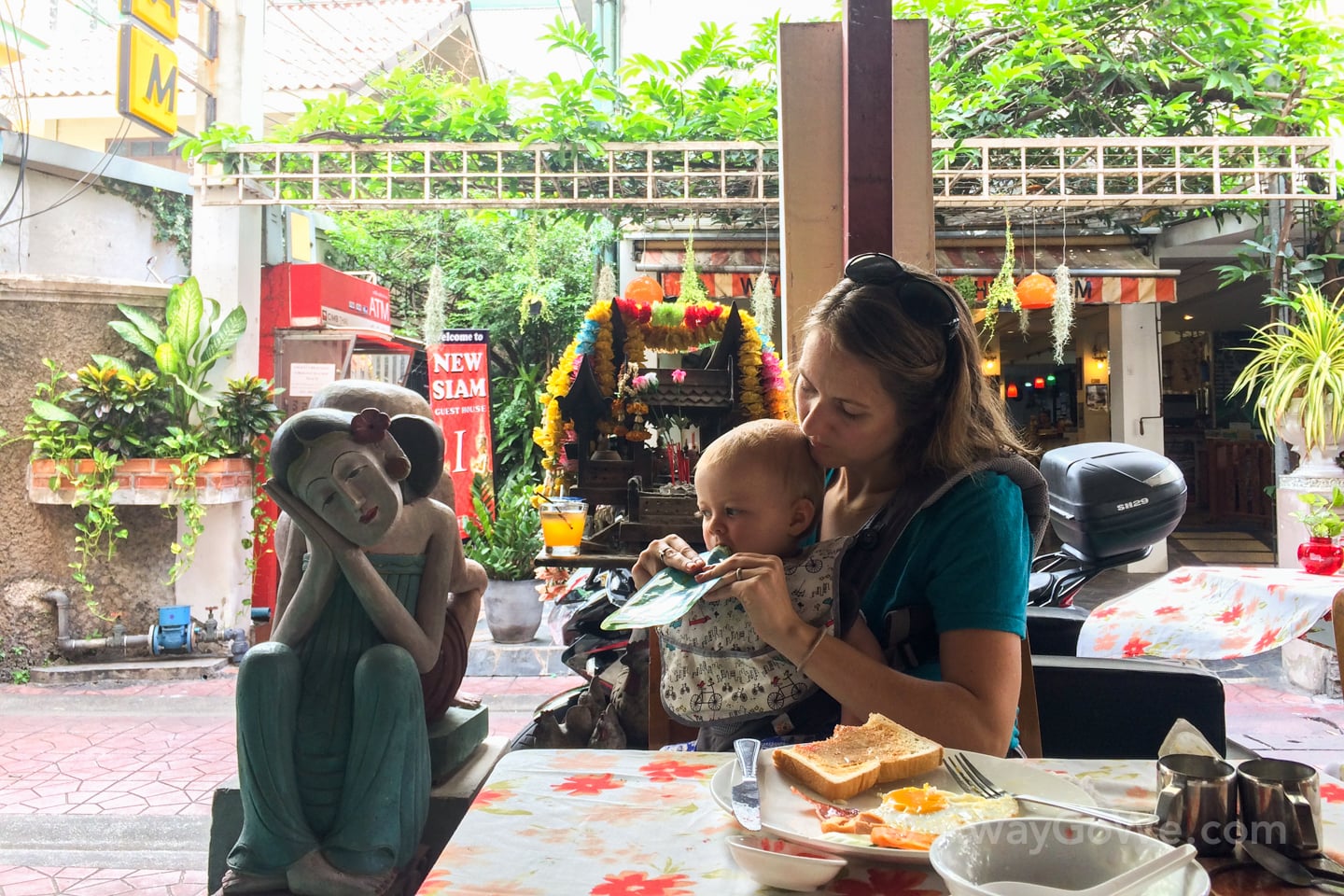
After a proper backpacker’s breaky at Wild Orchid Villa in Bangkok, we were ready for a full day of sightseeing. It’s an exciting day when a UNESCO site is on the list and today is no exception.
Many visitors to Bangkok opt to hire a guide or join a tour group to visit Ayutthaya, which lies about 50 miles (80km) north of the city. With a little effort, however, the trip can easily be done independently, as long as you’re flexible and prepared for a little bit of adventure.
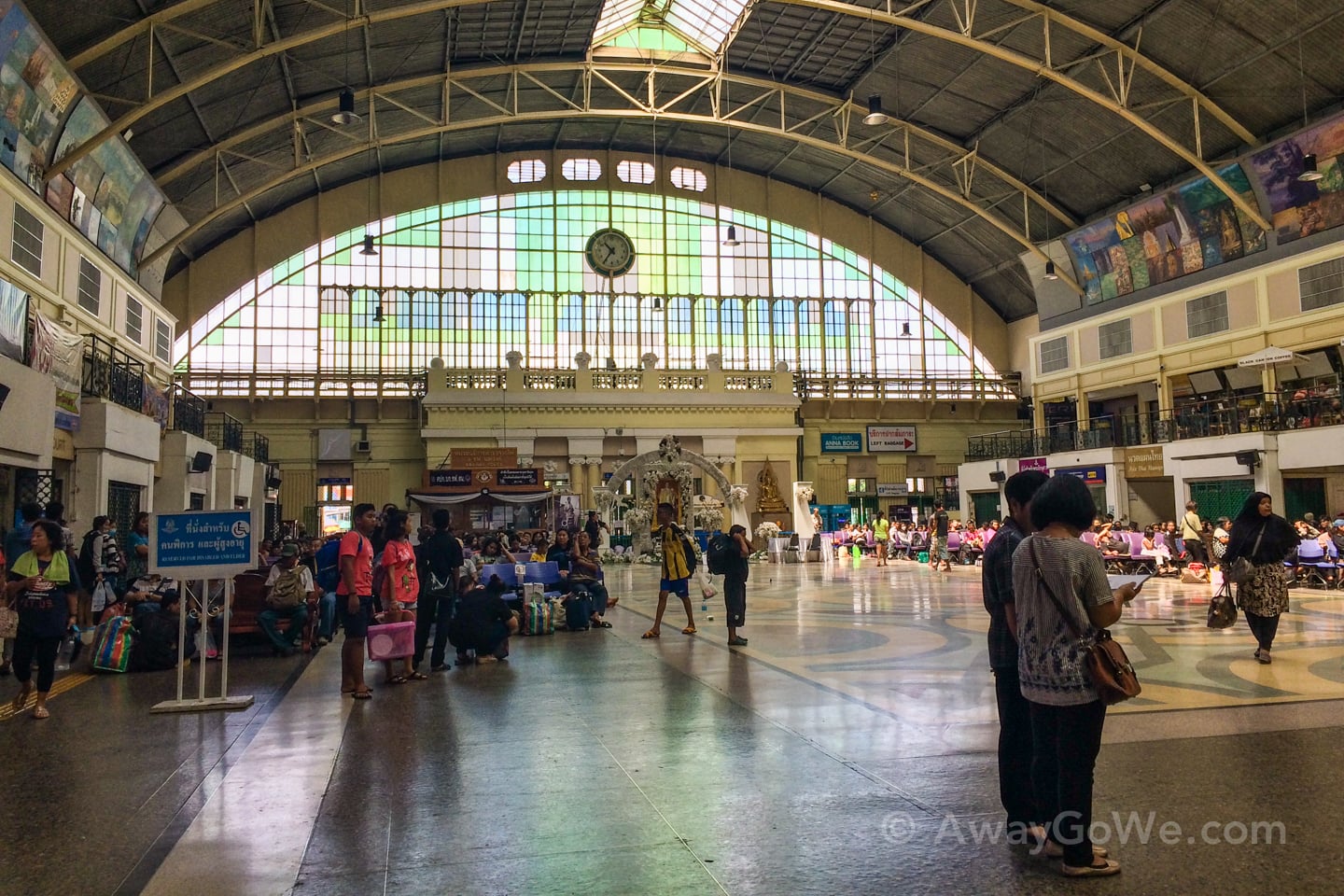
Doing it on our own means we get to work a legitimate train ride into the day. We love train travel, and living in Laos doesn’t afford us opportunities to ride the rails.
Noe had his first rail experience from Brussels to Bruges (our last new UNESCO foray), but at three months old, was probably too young to remember any of it. Doubtfully, he will not remember this either, but might be able to appreciate the experience a little more this time around.
We took a taxi-meter from near Wild Orchid Villa to the historic Bangkok Railway Station (aka Hua Lamphong). Upon entering the station, there are now friendly [English-speaking] officials there to direct passengers to the appropriate train.
Trains servicing Ayutthaya leave about every hour, but there can be longer gaps, midday. We had just missed the 3rd class regular service train, so our next option was the much more expensive 2nd class A/C Special Express (US$10.00 vs. US$0.50!!!). Still, $10.00 per passenger for a comfortable 90-minute train ride isn’t too bad of a deal (yes, it took us 90 minutes on an express train to cover the 50 miles to Ayutthaya!!! — most of that time was spent stopping at stations in Bangkok on our way out of the city…maybe that’s what they mean by “special” express).
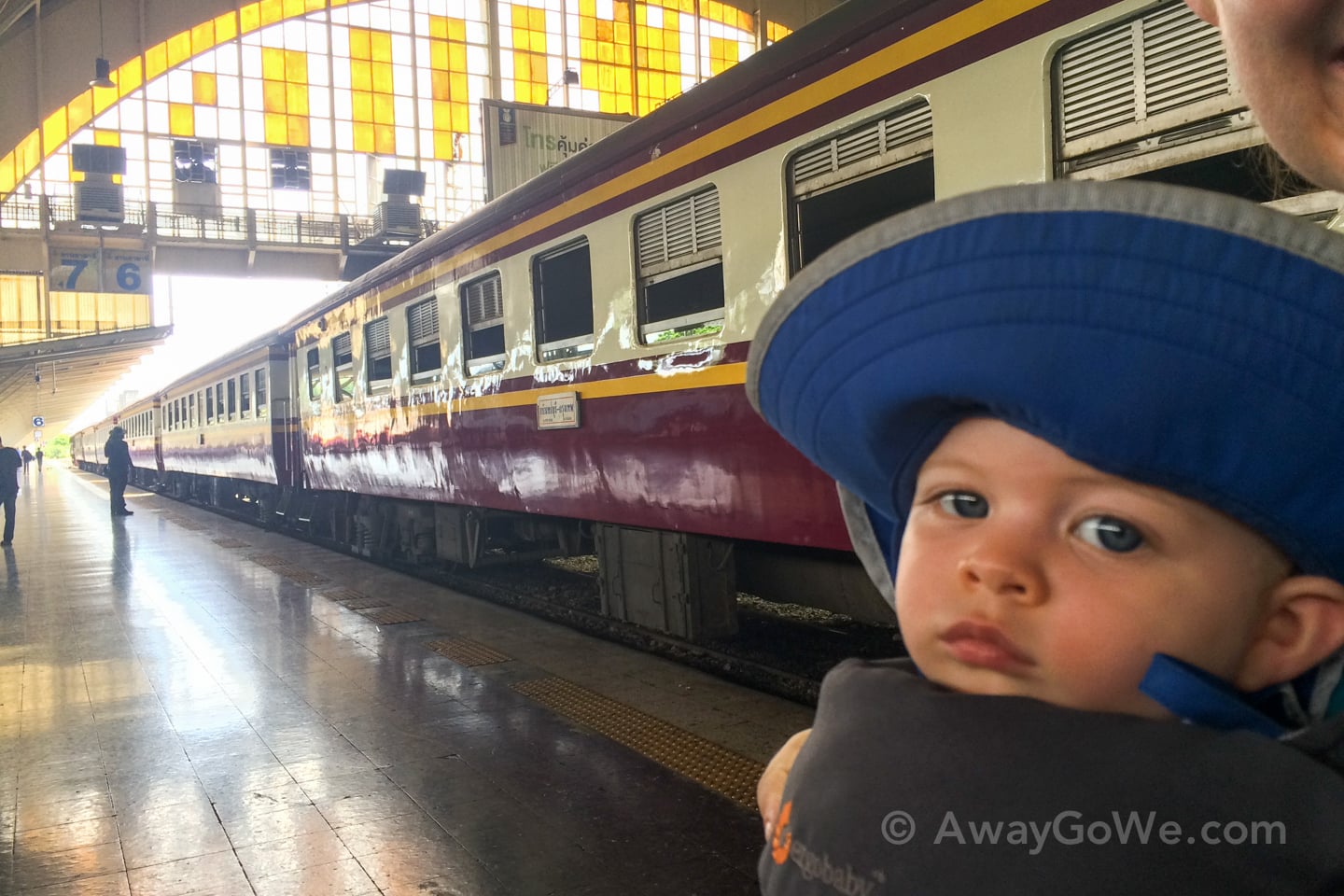
Being back at Hua Lumphong brought back a flood of memories from our 2012 rail adventures in Thailand, when we rode the train down towards the Gulf Islands and back to Bangkok, then up to Chiang Mai. We spent a lot of time in this station, perhaps more than any other train station we’ve used. Though our time here was short in comparison, it was fun to introduce Noe to this special place, though he’s not quite at the age yet where he gets excited about things like trains, planes, trucks, etc…but soon.
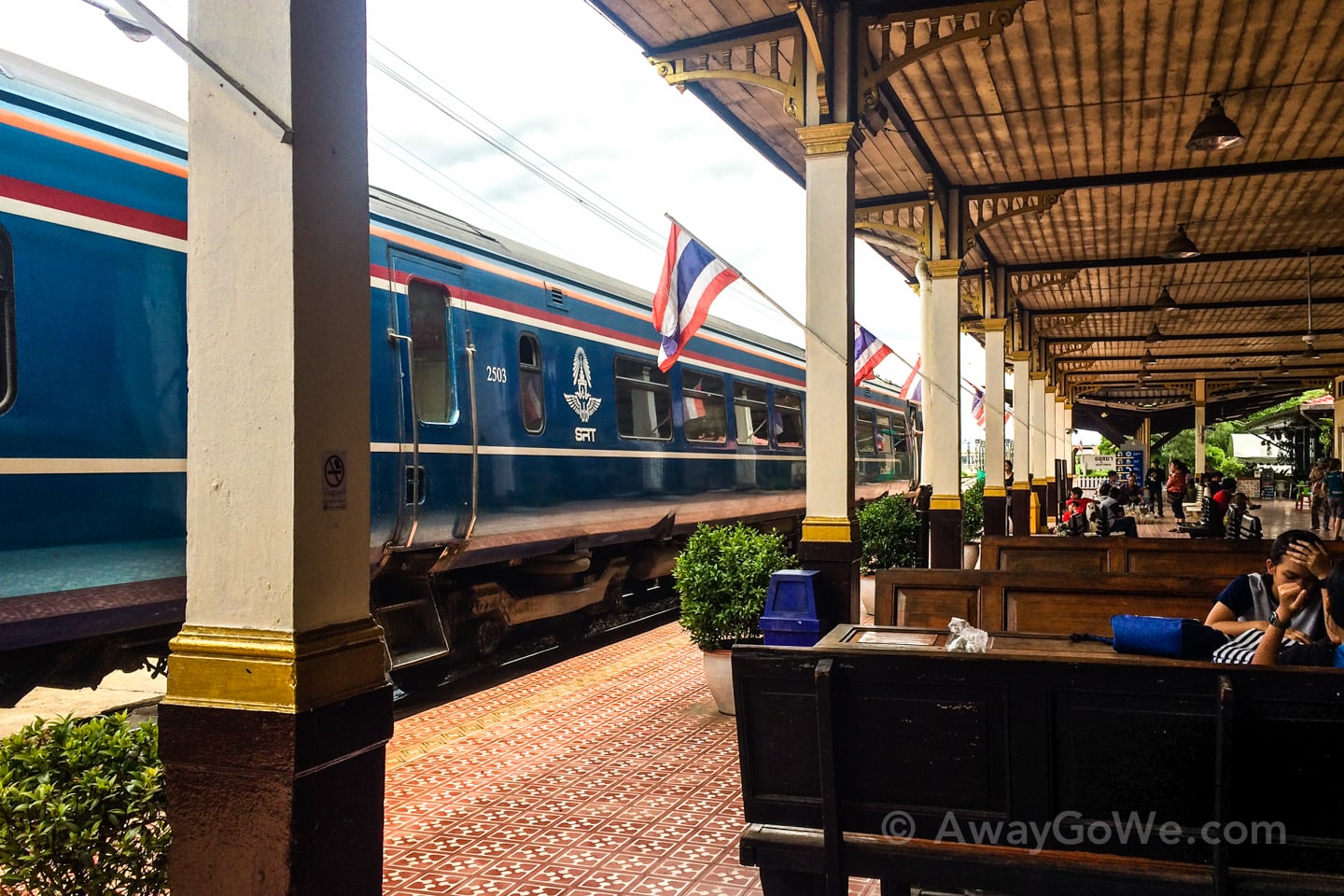
Ayutthaya station harkens back to the Golden Age of train travel, where people waited on the platform in opulent, hand-crafted surroundings listening for the announcement of their train approaching the station. One of our favorite things about traveling around India for nearly two months was the inordinate amount of time spent on trains and in railway stations. There’s nothing else quite like a fully-functioning and utilized railway station, particularly in Asia.
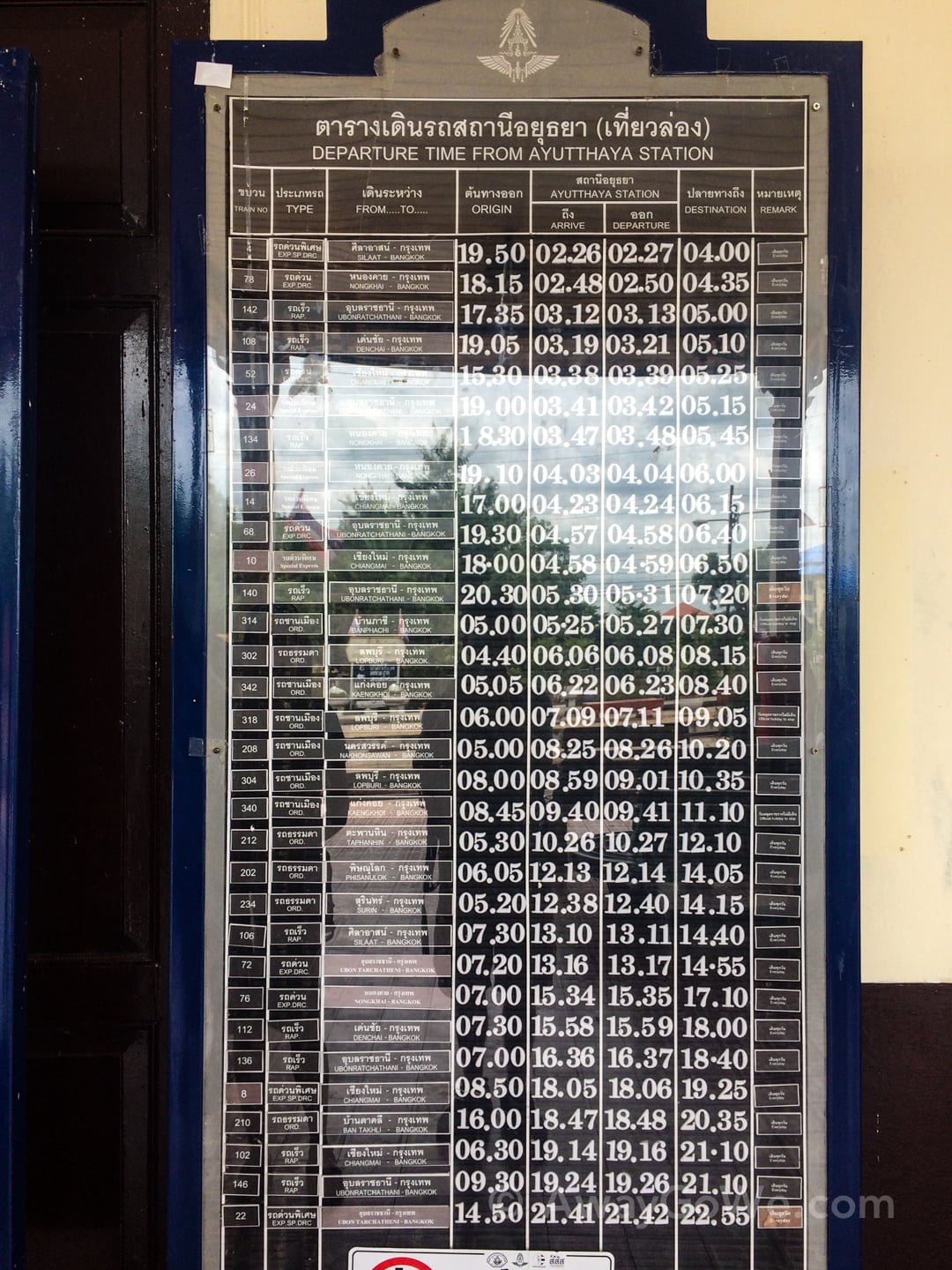
Ayutthaya’s train schedule board is still of the old-fashioned variety, where trains and times are lovingly placed by hand.
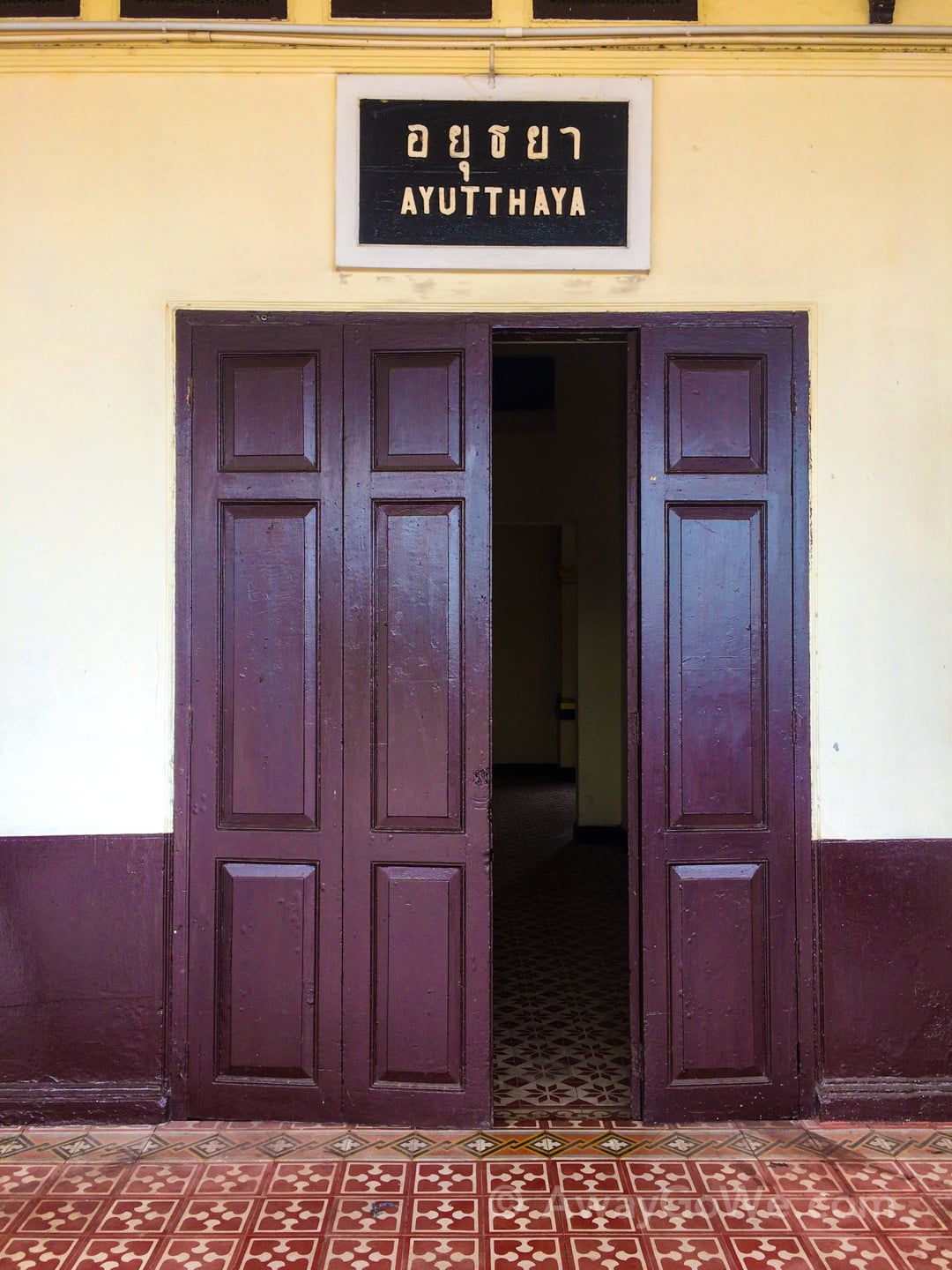
From the railway station, it’s a short walk to the ferry, though there was a bit of confusion as to the actual location of the ferry. Surprisingly, there are no signs (in English, at least) directing you toward the ferry (which is literally straight out of the railway station). We wouldn’t have known this if we hadn’t consulted Google Maps on our phones.

Ayutthaya is not difficult to explore (and get to from Bangkok) on your own. But comprehensive info can be a bit challenging to come across, I suppose because most people end up doing it as part of a tour. For those of you who’d like to tackle this independently, we’ve included a map (above) with helpful markers that we wish we would have had easy access to (including the ferry docks, seven main sites that are included in a day pass (green markers), the restaurant zone, and other points of interest.
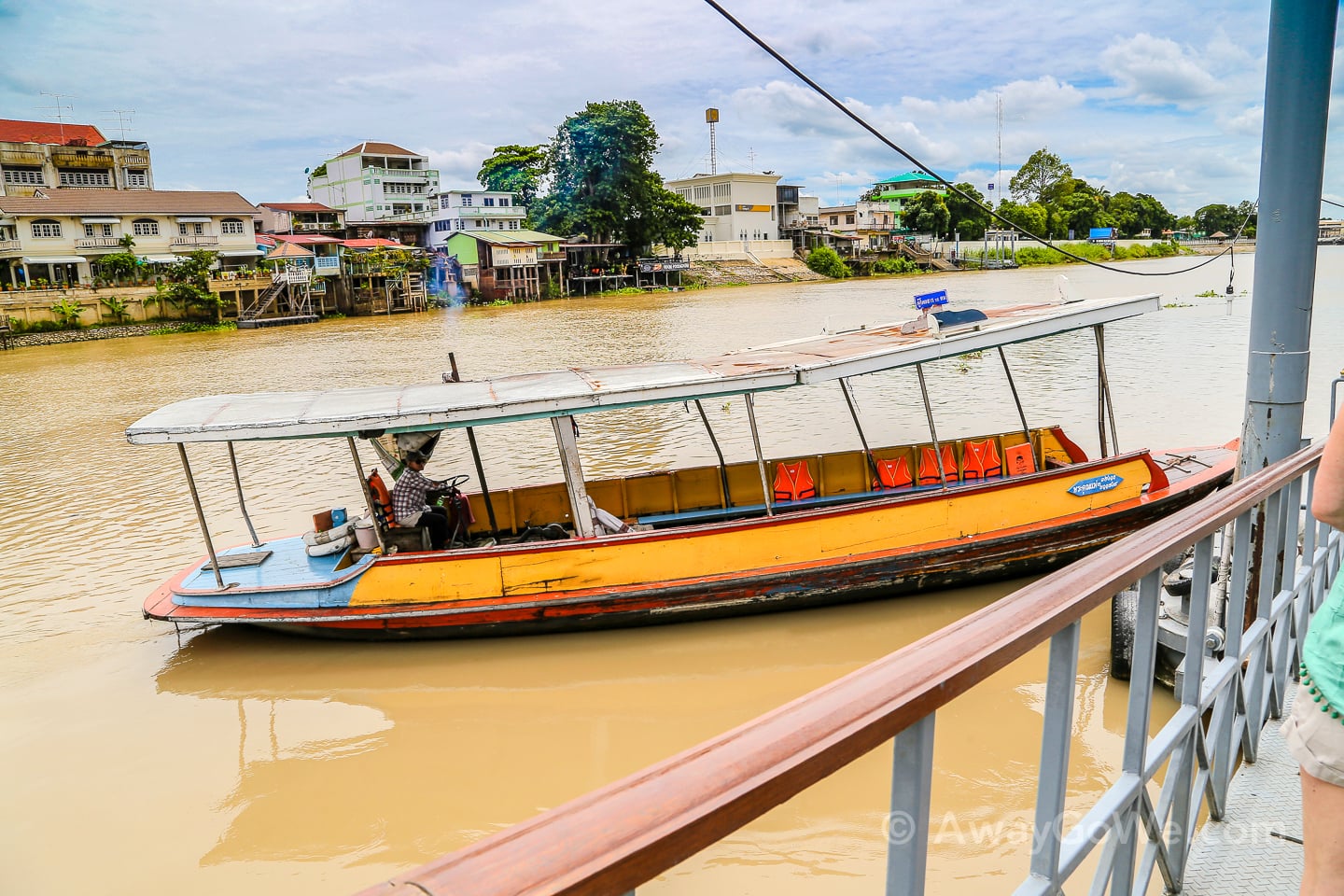
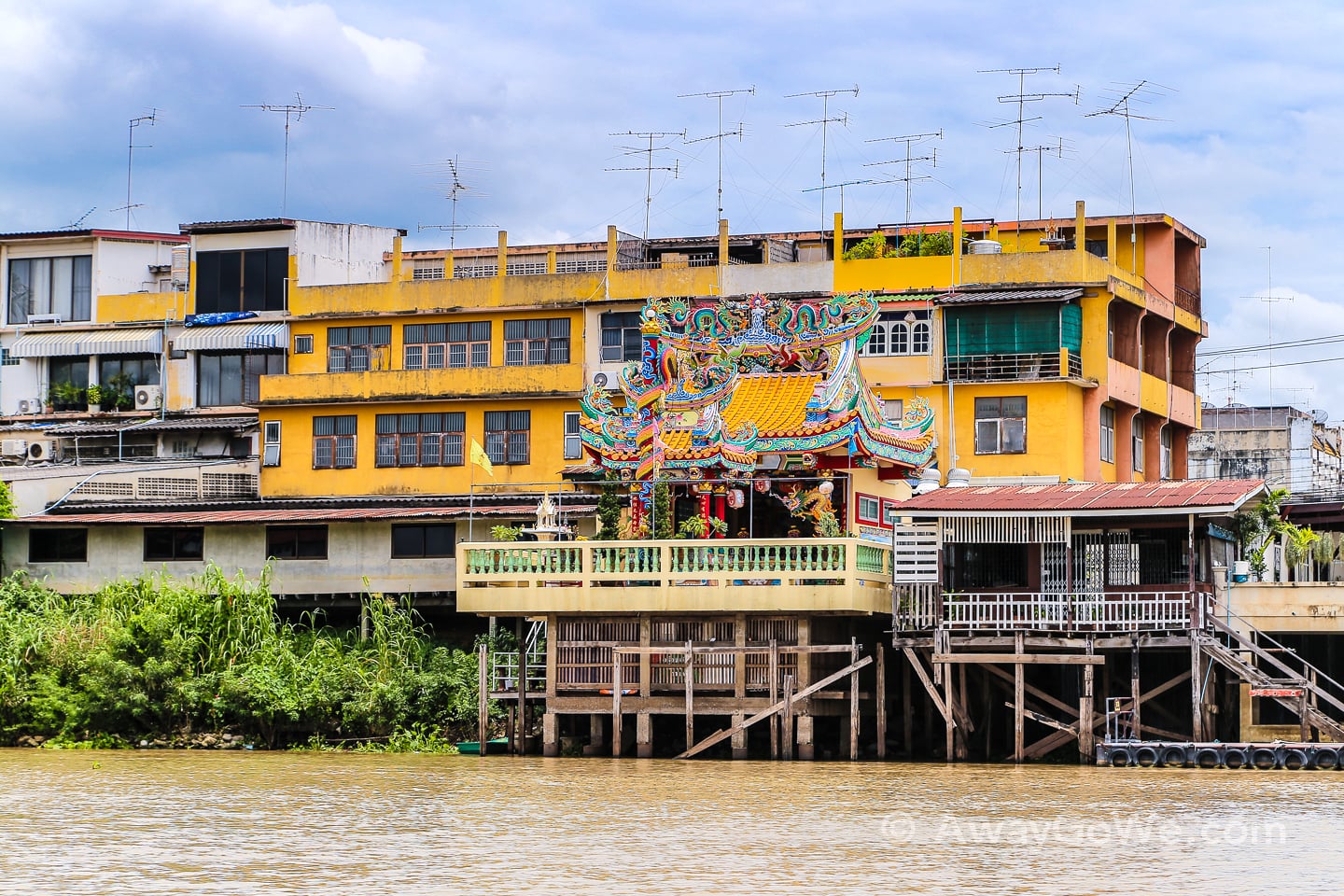
From the ferry dock, it’s a leisurely 1 km (0.75 mile) walk straight down the road to the closest major site on the island, Wat Maha That.
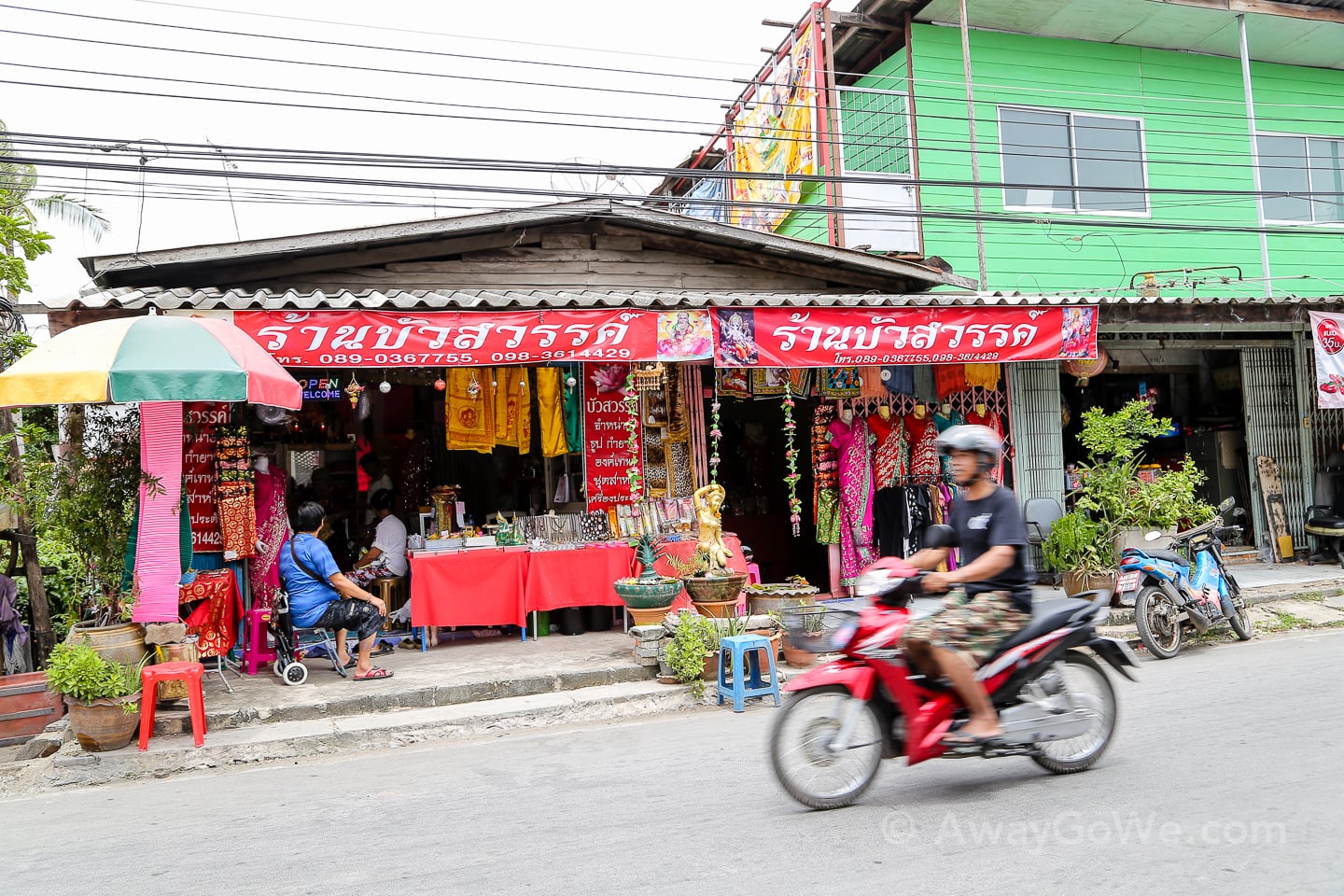
The primary archeological sites of Ayutthaya Historical Park span a 2 mile (3km) radius, with four miles separating the furthest two (as the crow flies). With that said, the bulk of the top sights are clustered together around Rama Public Park in the center of the city’s “island.” For 220 baht per person, you can buy a day pass covering seven of the top sites, including Wat Maha That, Wat Phra Si Sanphet, Wat Ratcha Burana, Wat Phra Ram, Wat Chai Watthanaram, and Wat Maheyong, along with the ruins of the Old Palace, sort of thrown in as a disappointing bonus.
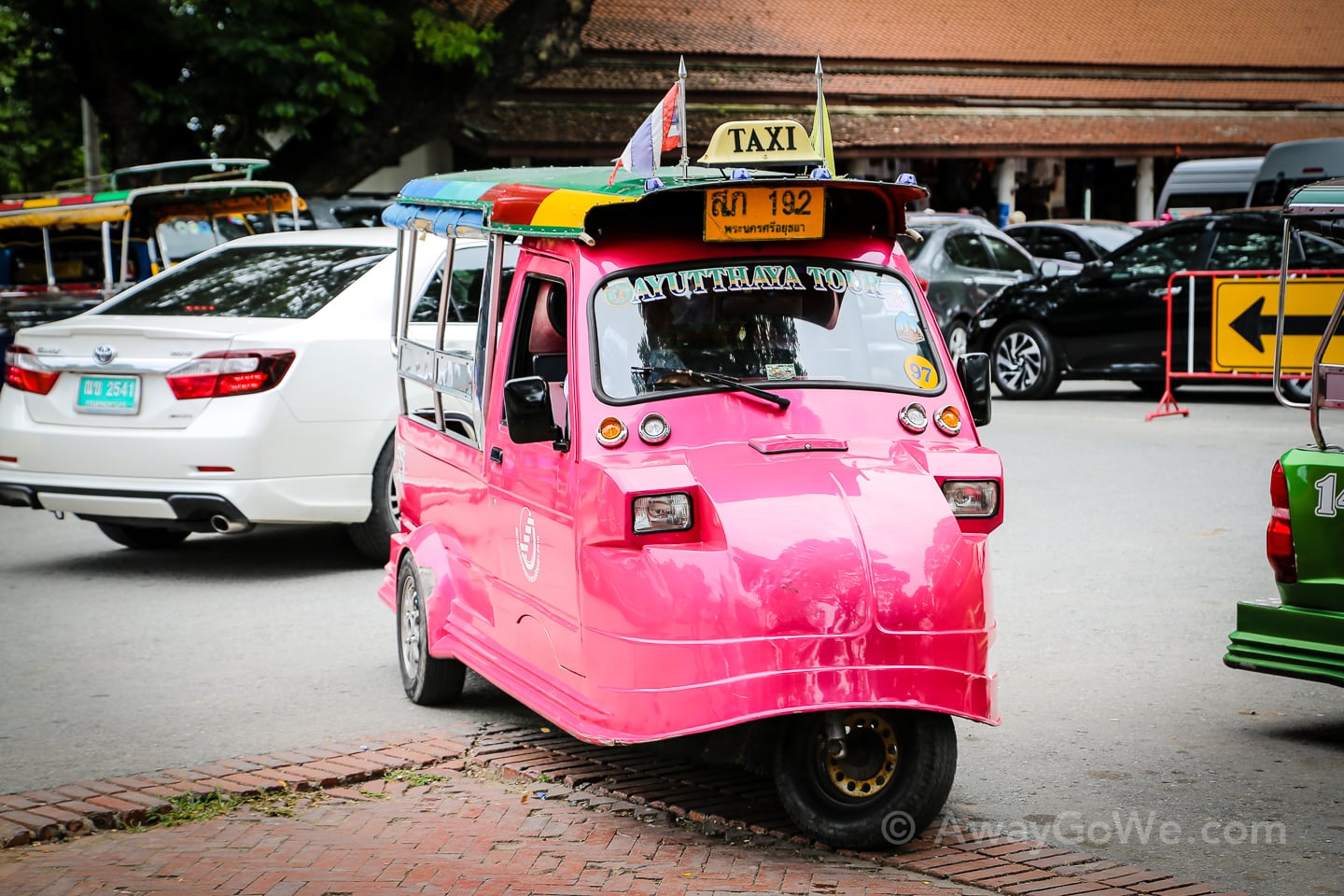
You can also get around in any number of funky tuk-tuks that hang out outside of the railway station and around all the major historic sites. We walked for most of the day, but utilized a tuk tuk in the afternoon to get from the Old Palace down to Wat Chai Watthanaram, all by its lonesome across the river on the far western side of the city. From there, we caught a tuk-tuk back to the railway station.
• • •
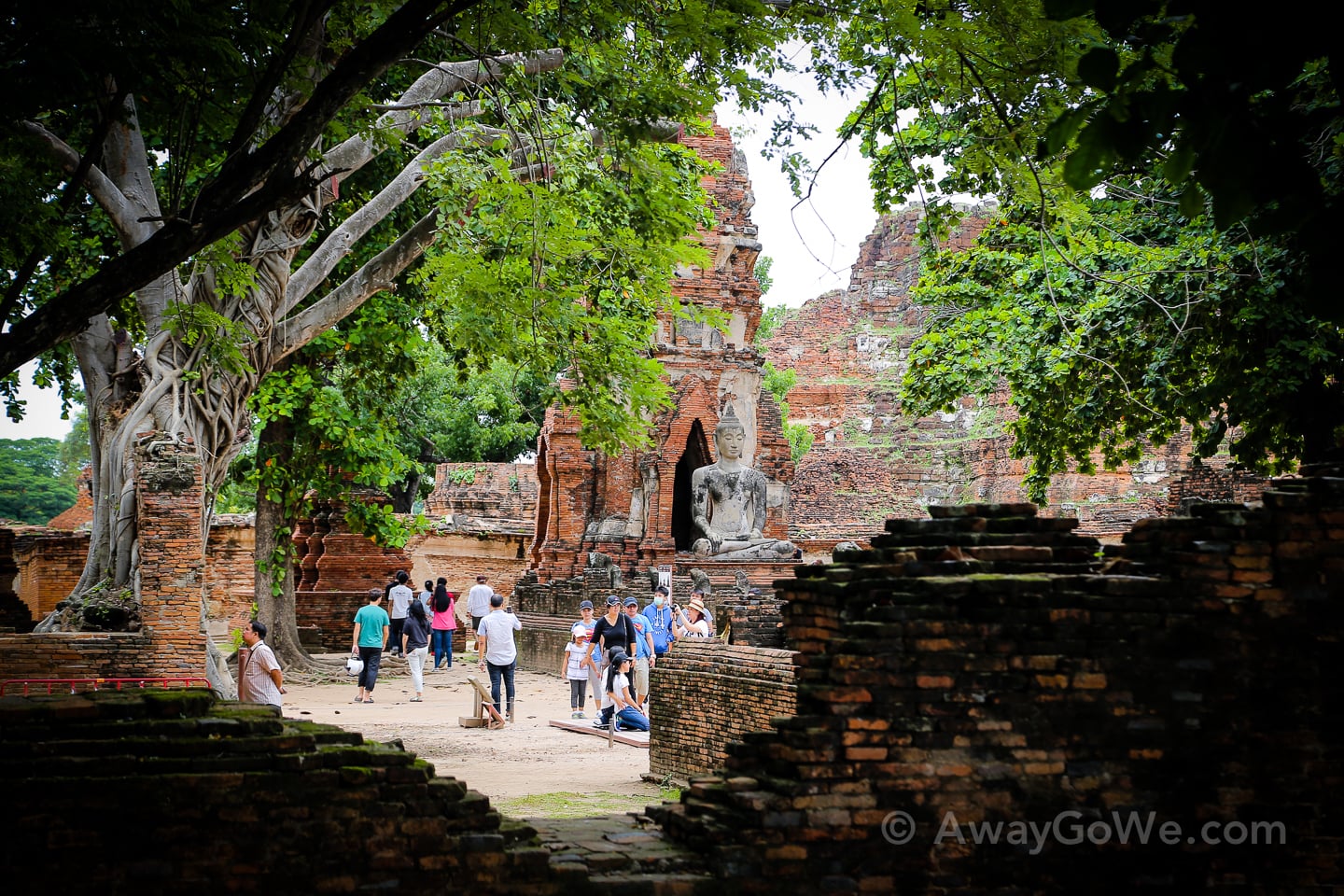
Wat Maha That
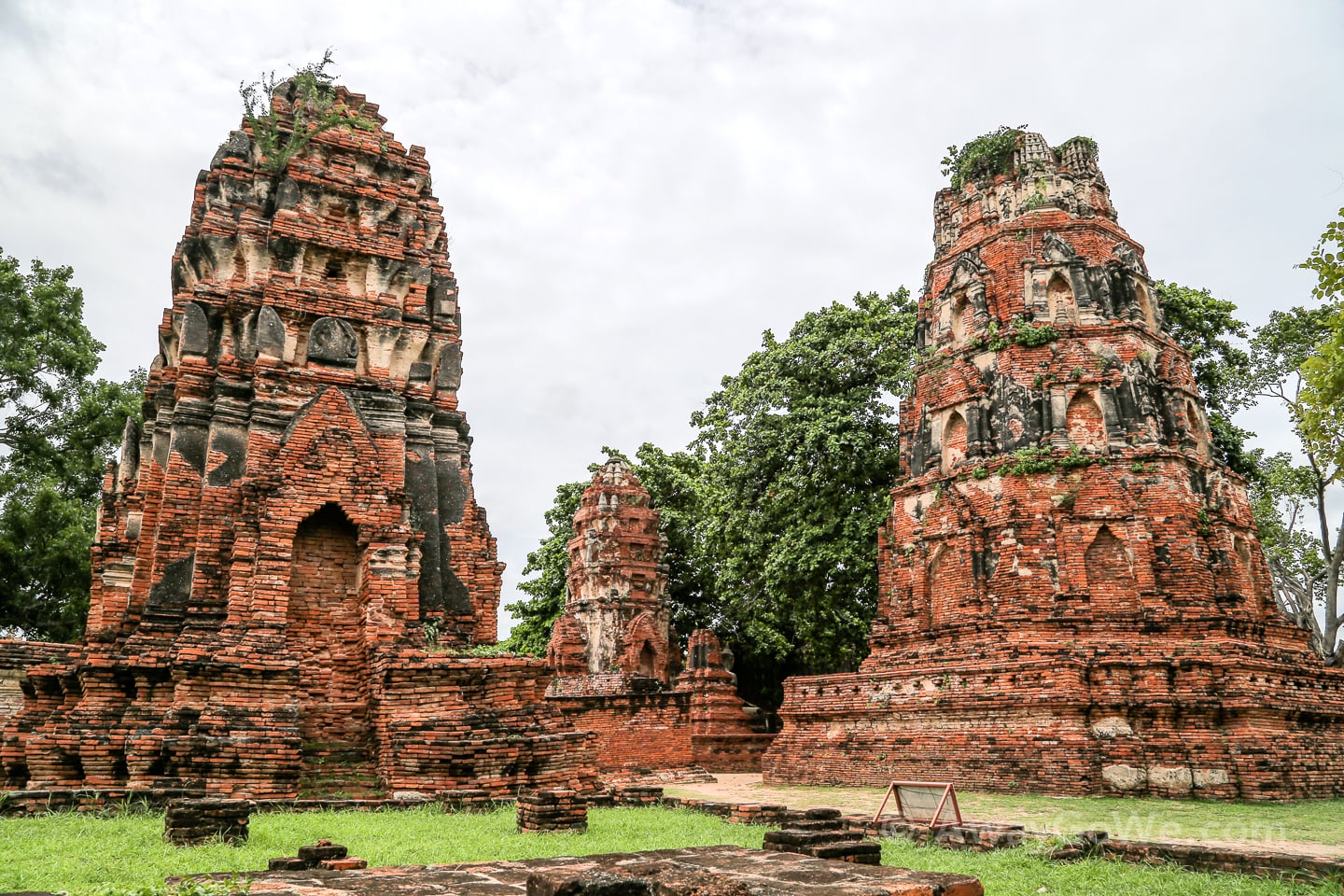
Our first stop of the day was Wat Maha That, the site of perhaps Ayutthaya’s most photographed image: the sandstone Buddha head mysteriously tangled in tree roots.
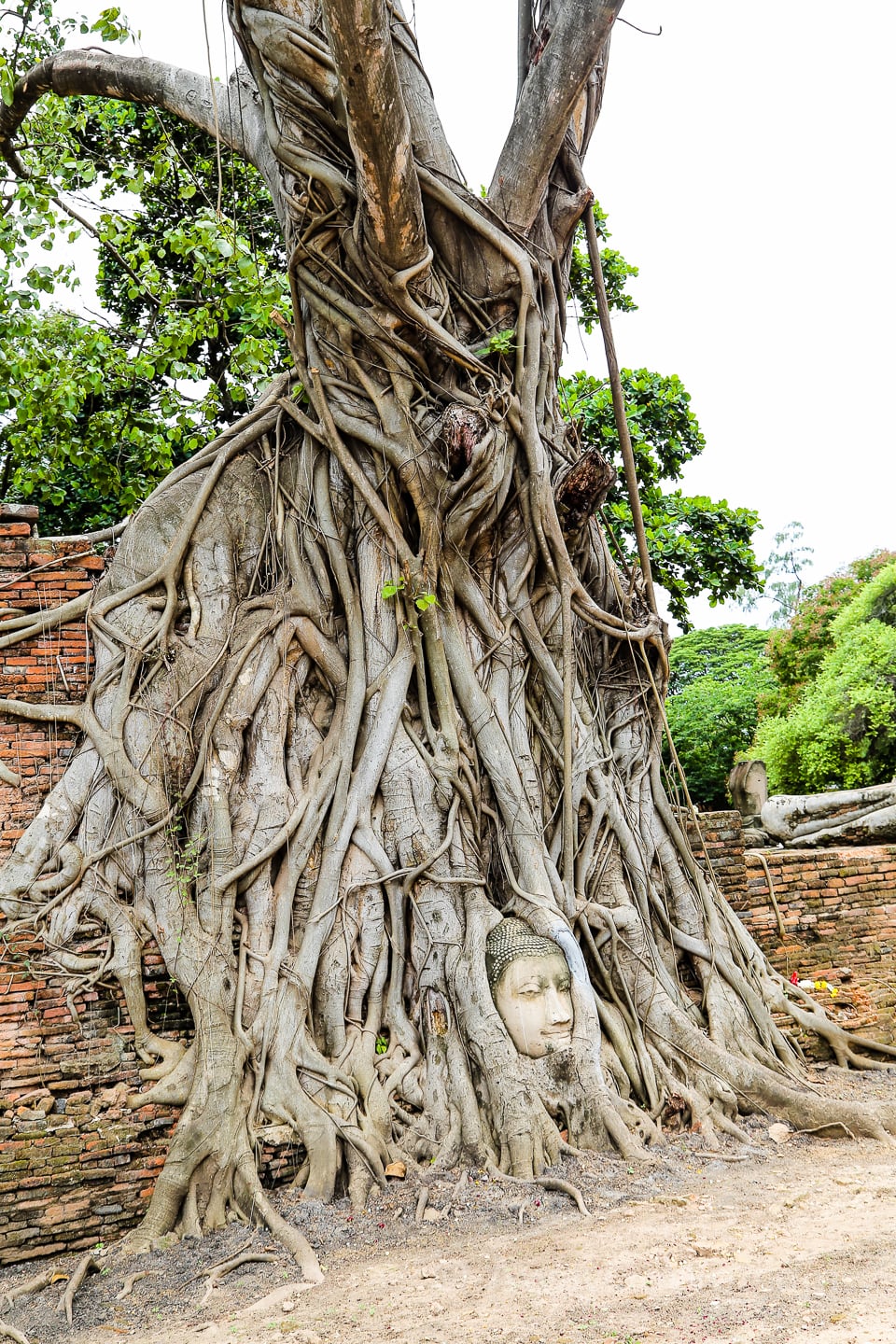
Apparently, in the wake of sacking the city, the Burmese toppled a Buddha statue perched above this wall. The head remained undisturbed for centuries as the roots of this tree slowly grew around the Buddha head.
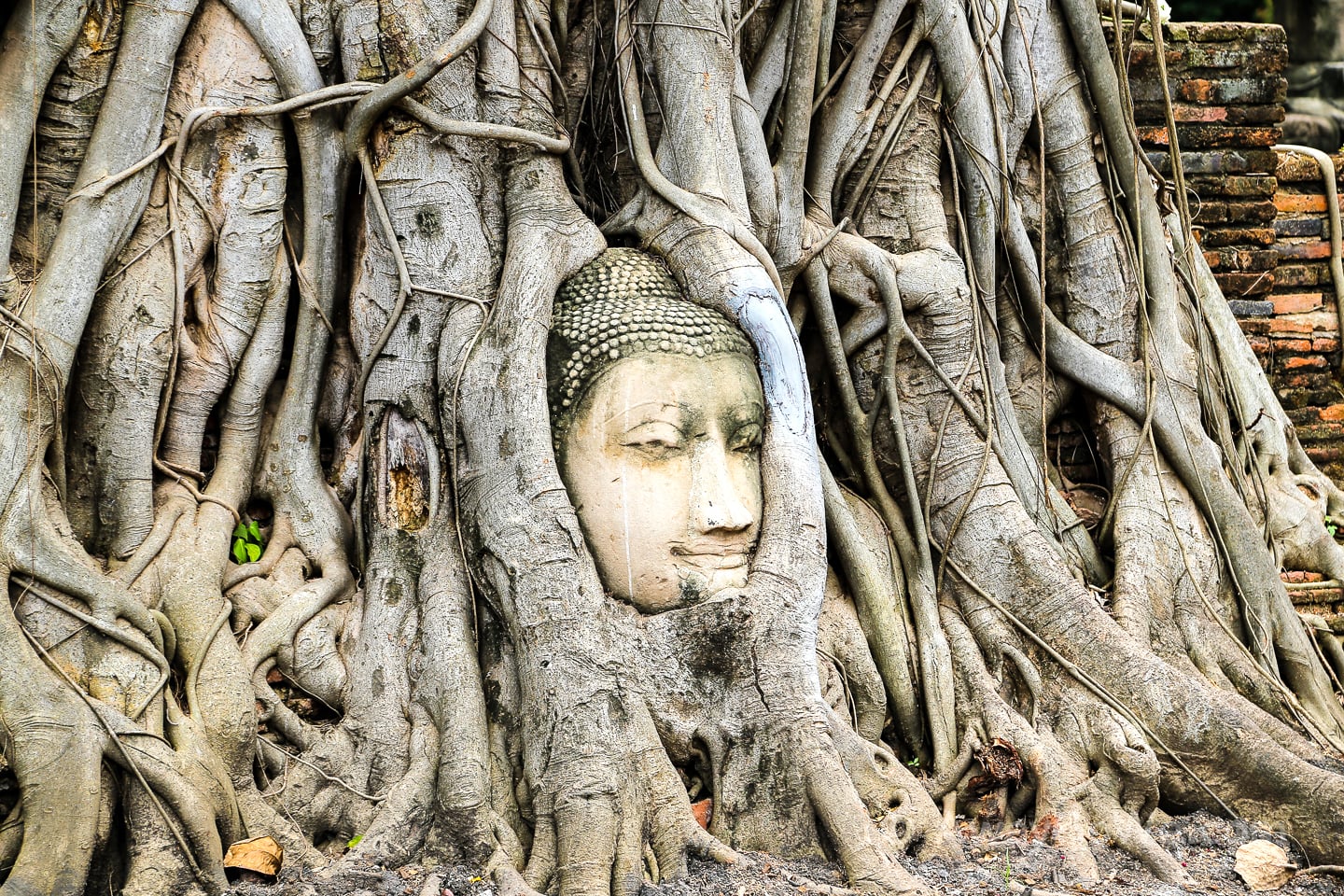
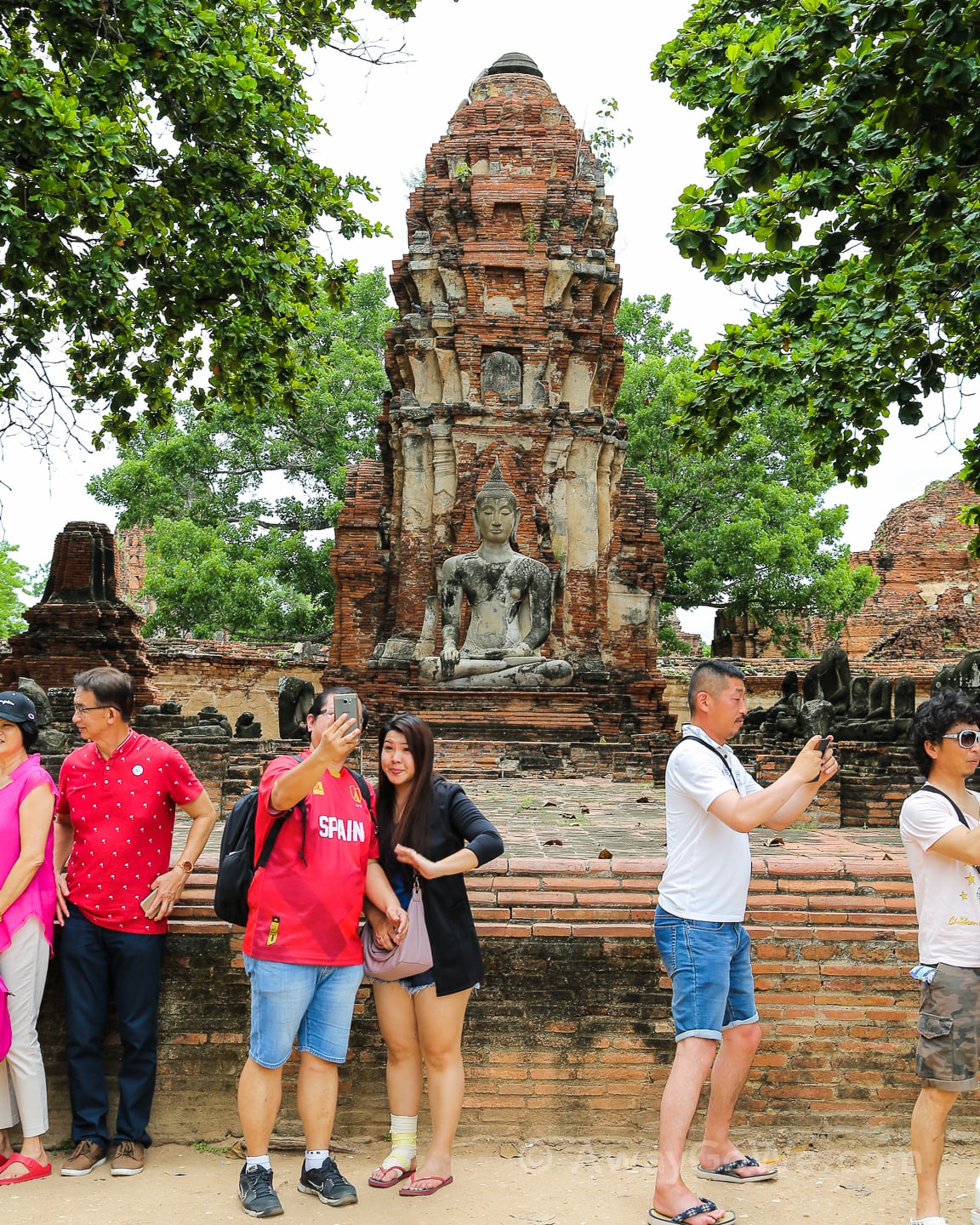
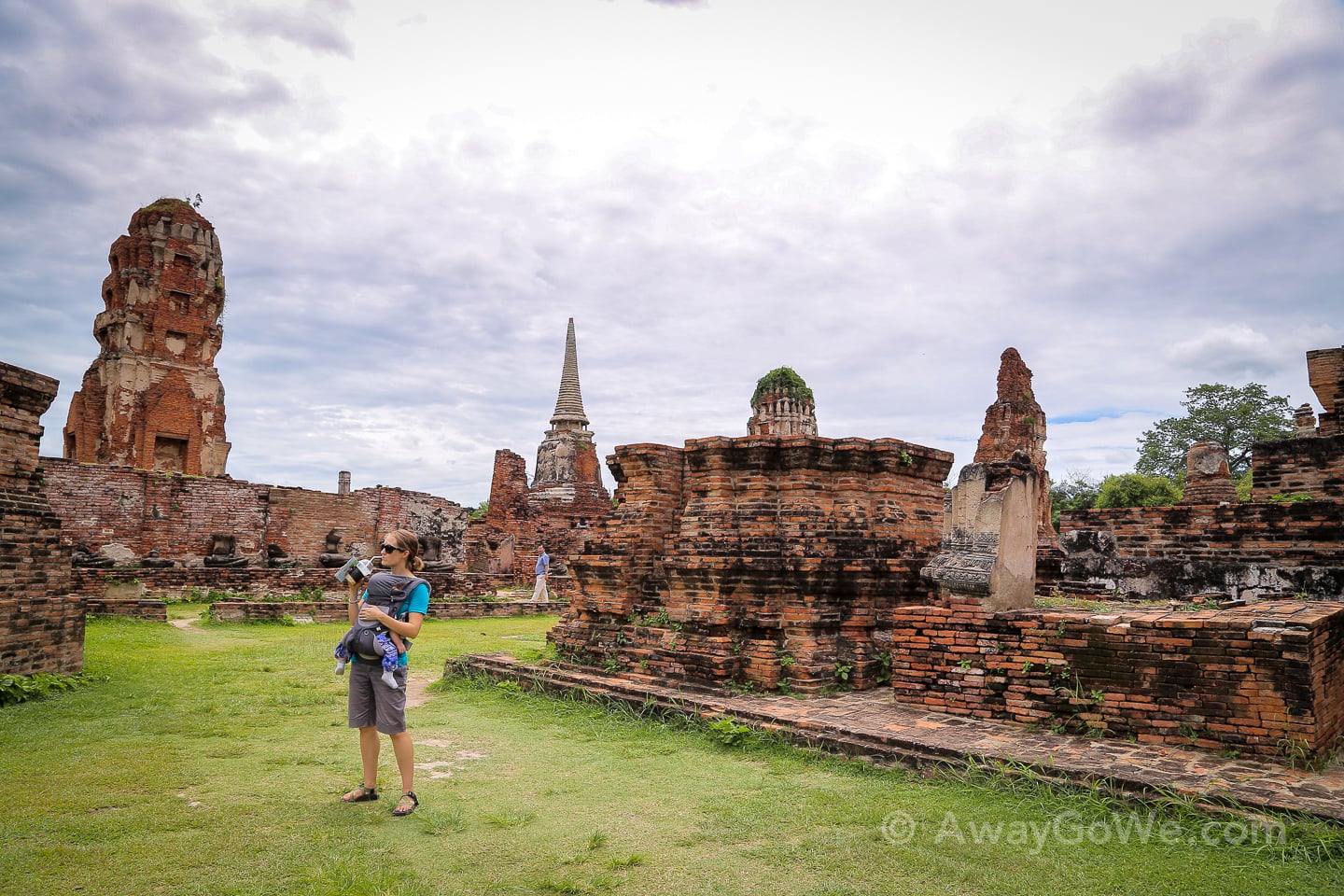
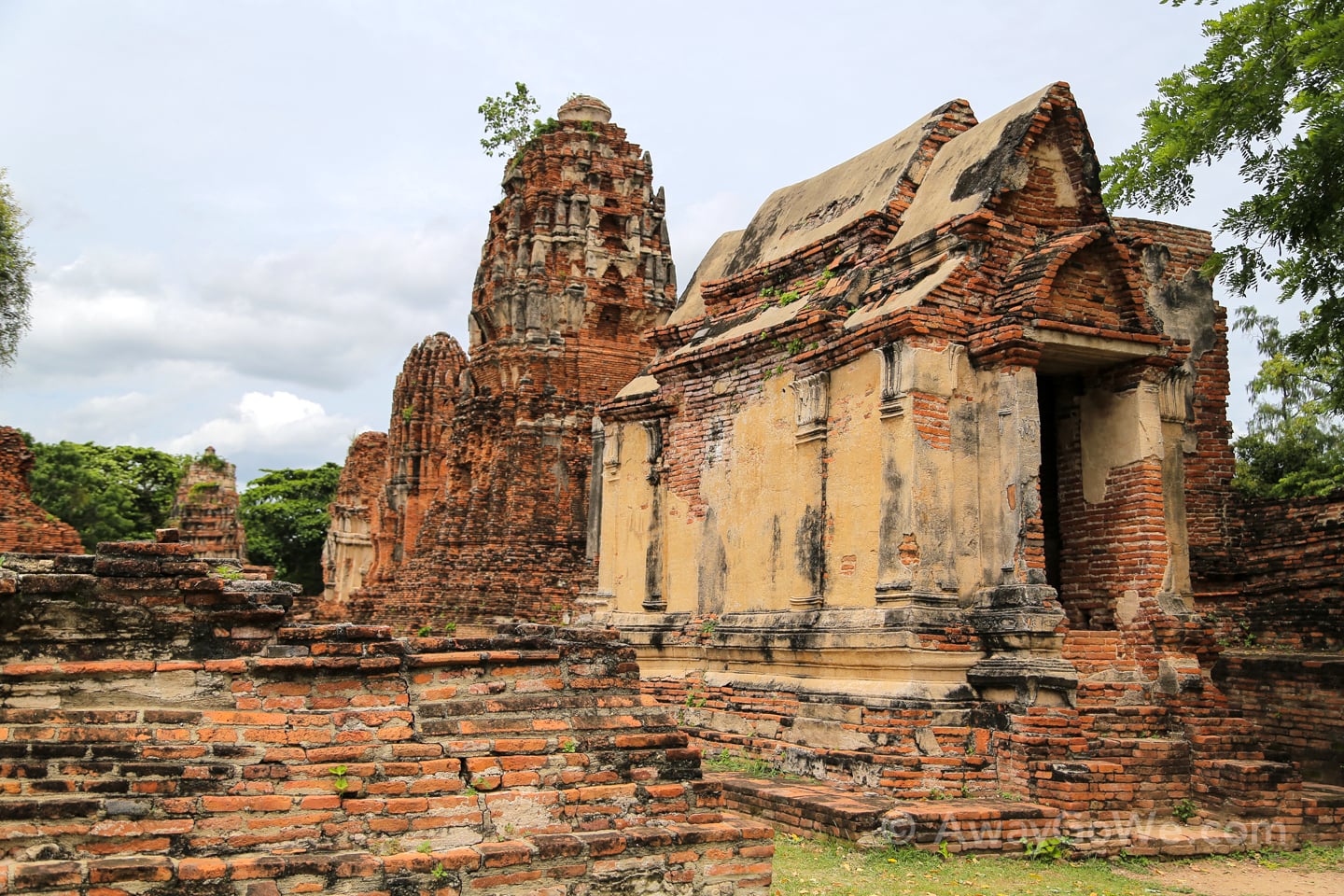
This might be a good time to talk briefly about the historical significance of Ayutthaya, in general. The city was founded by King Ramathibodi I in 1351 and served as the seat of the powerful Ayutthaya kingdom until it was destroyed by the Burmese Army in 1767.
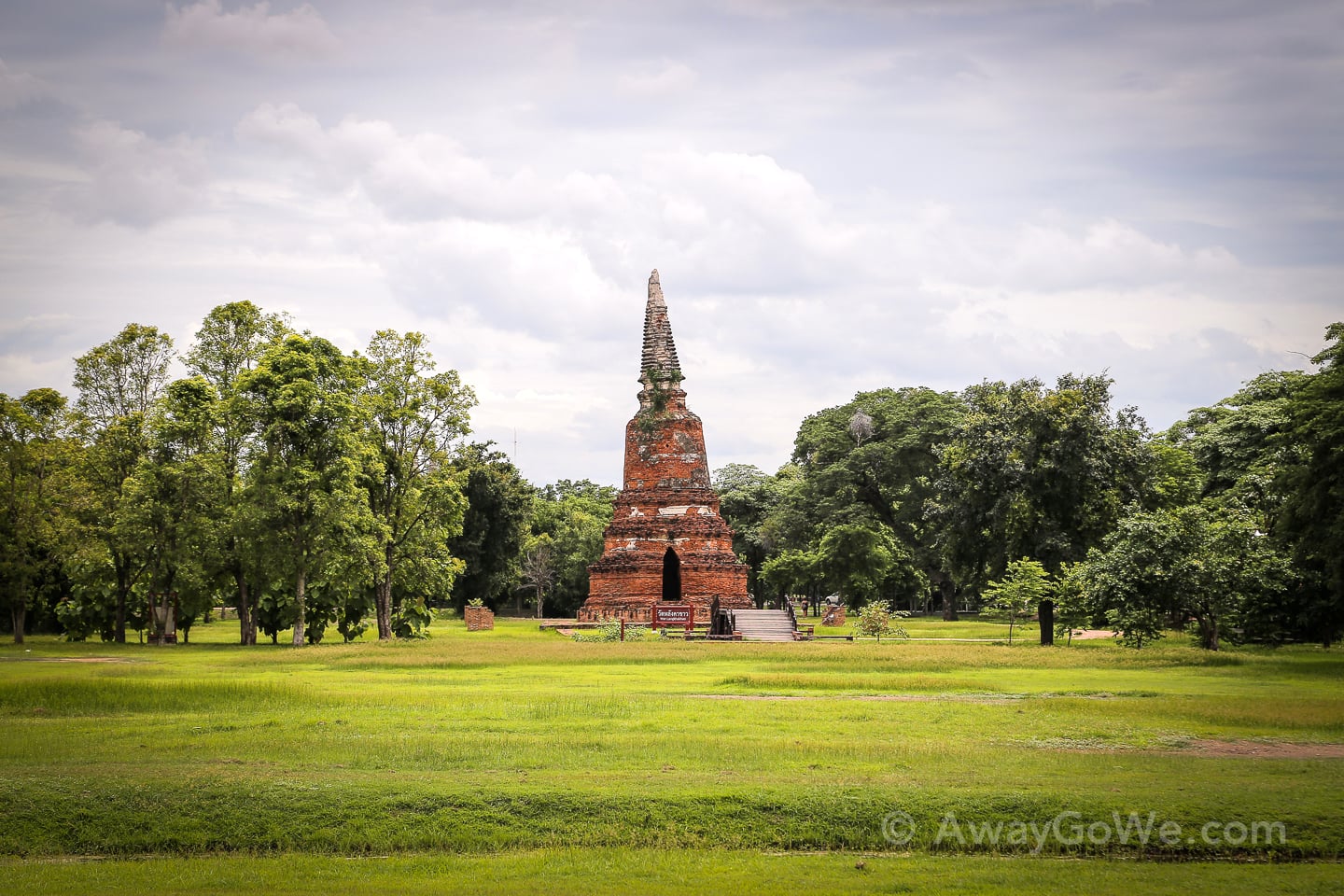
Known as Siam to the Western world (though subjects identified themselves as Tai), Ayutthaya was one of the biggest and wealthiest cities in East at the height of its influence, and its size and wealth were often compared to that of Paris in the 17th century.
Ayutthaya Historical Park became a UNESCO World Site in 1991.
• • •
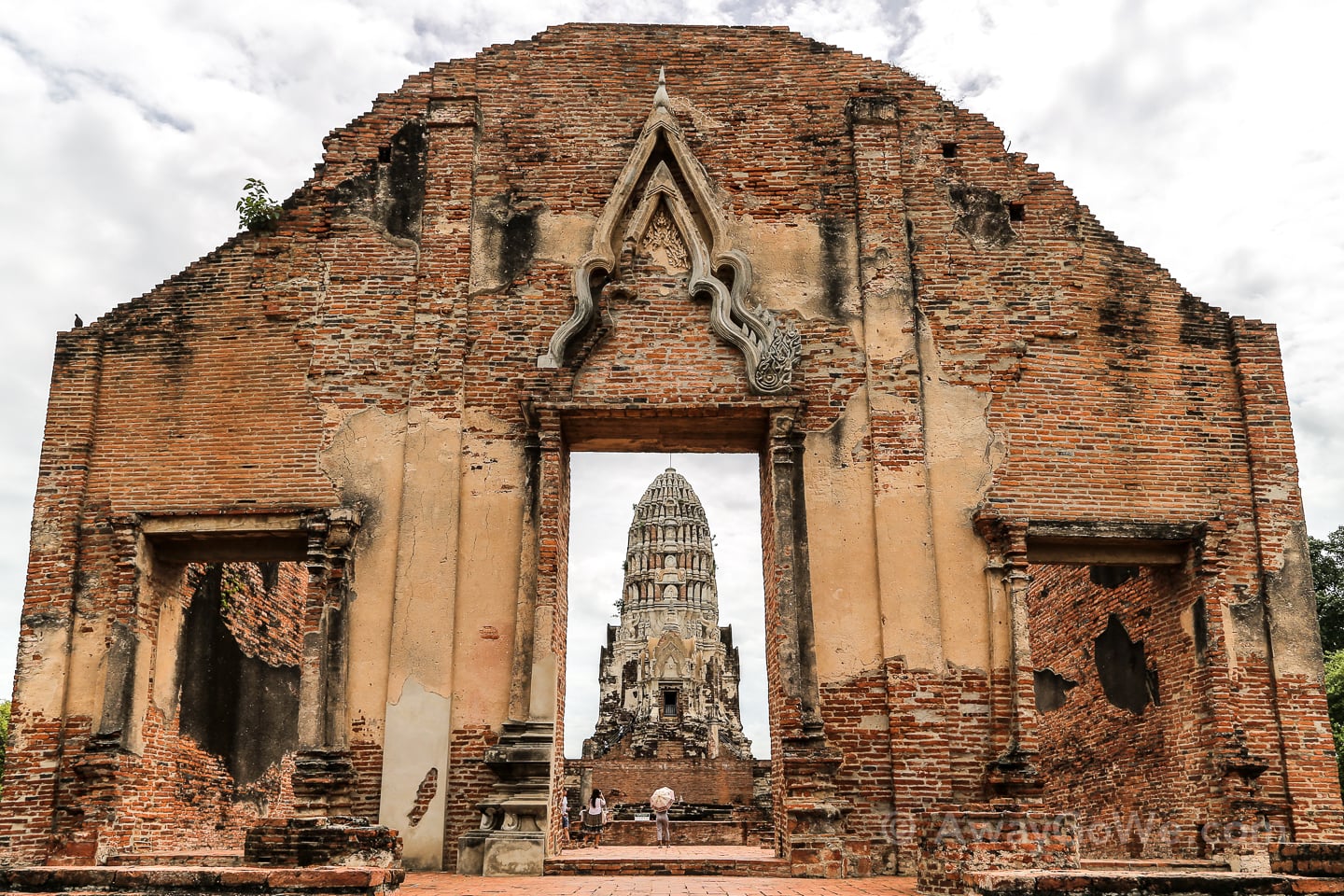
Wat Ratcha Burana
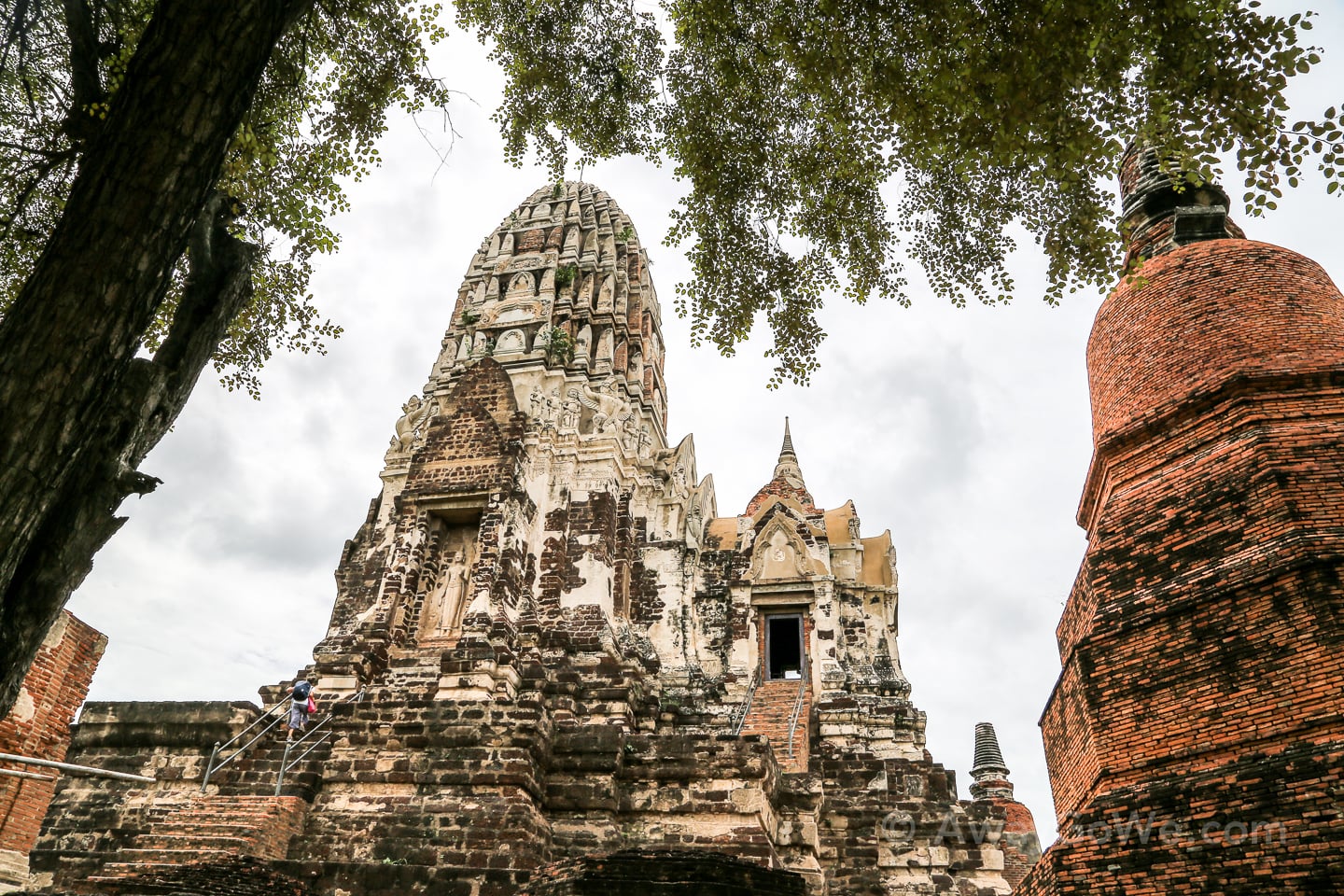
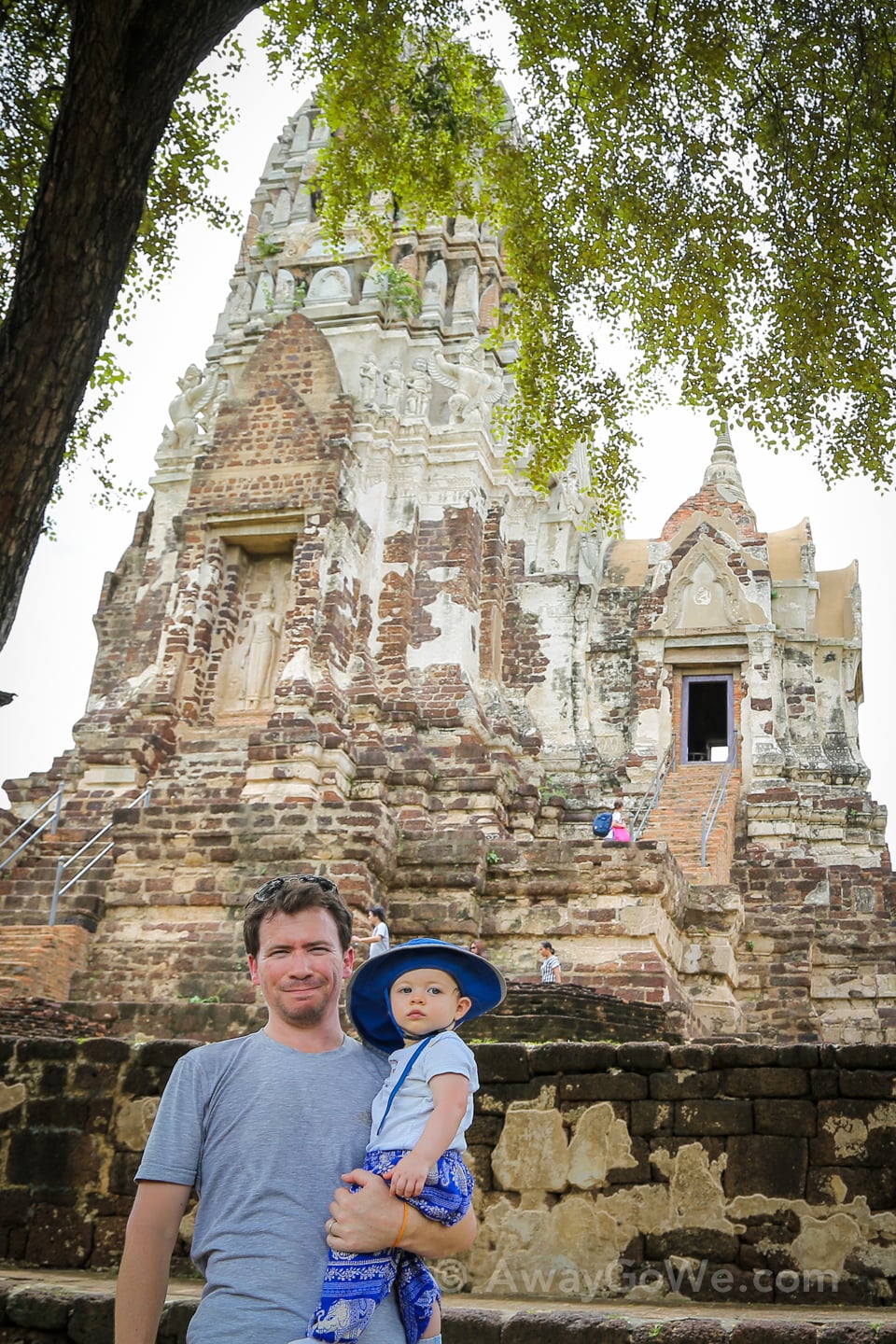
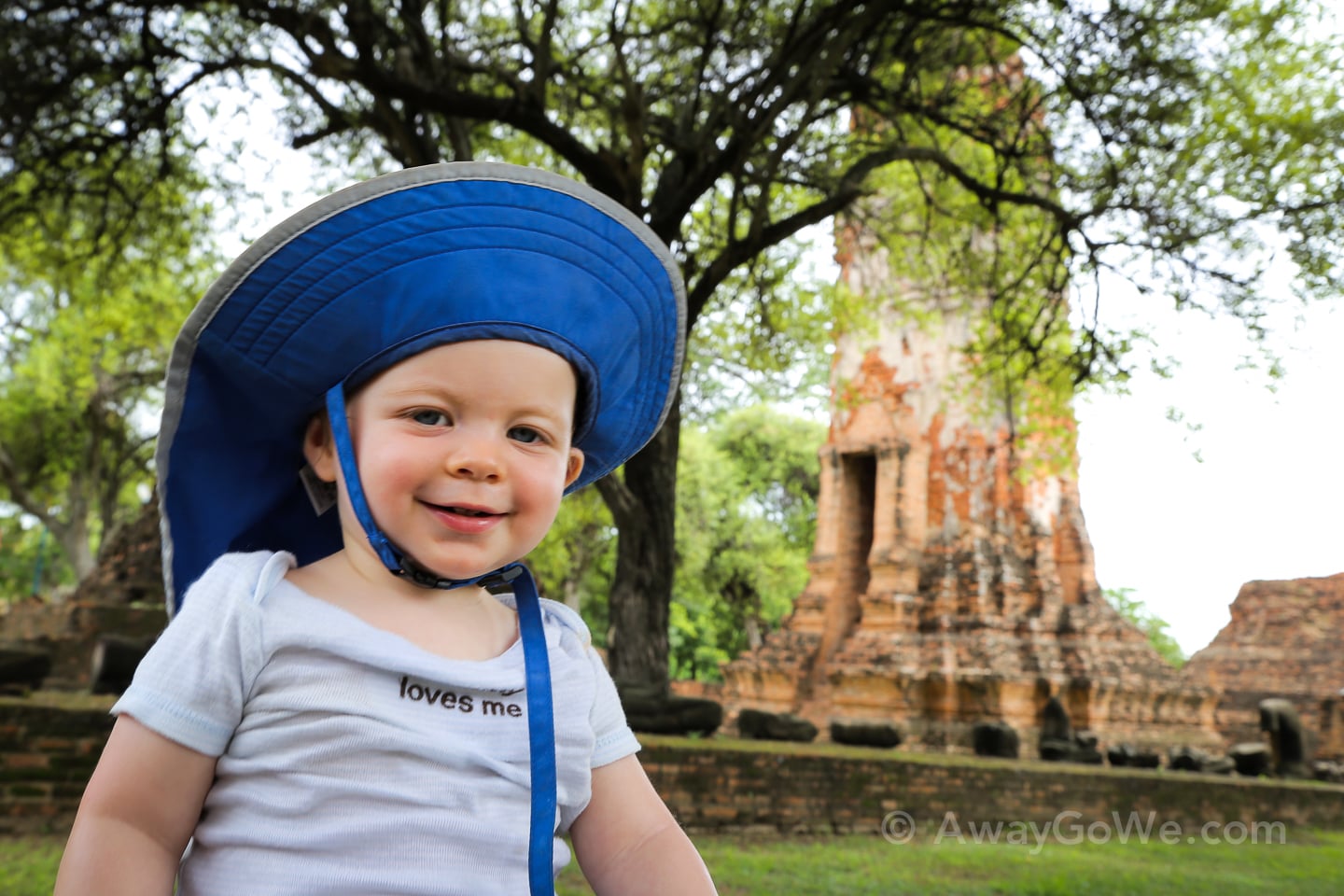
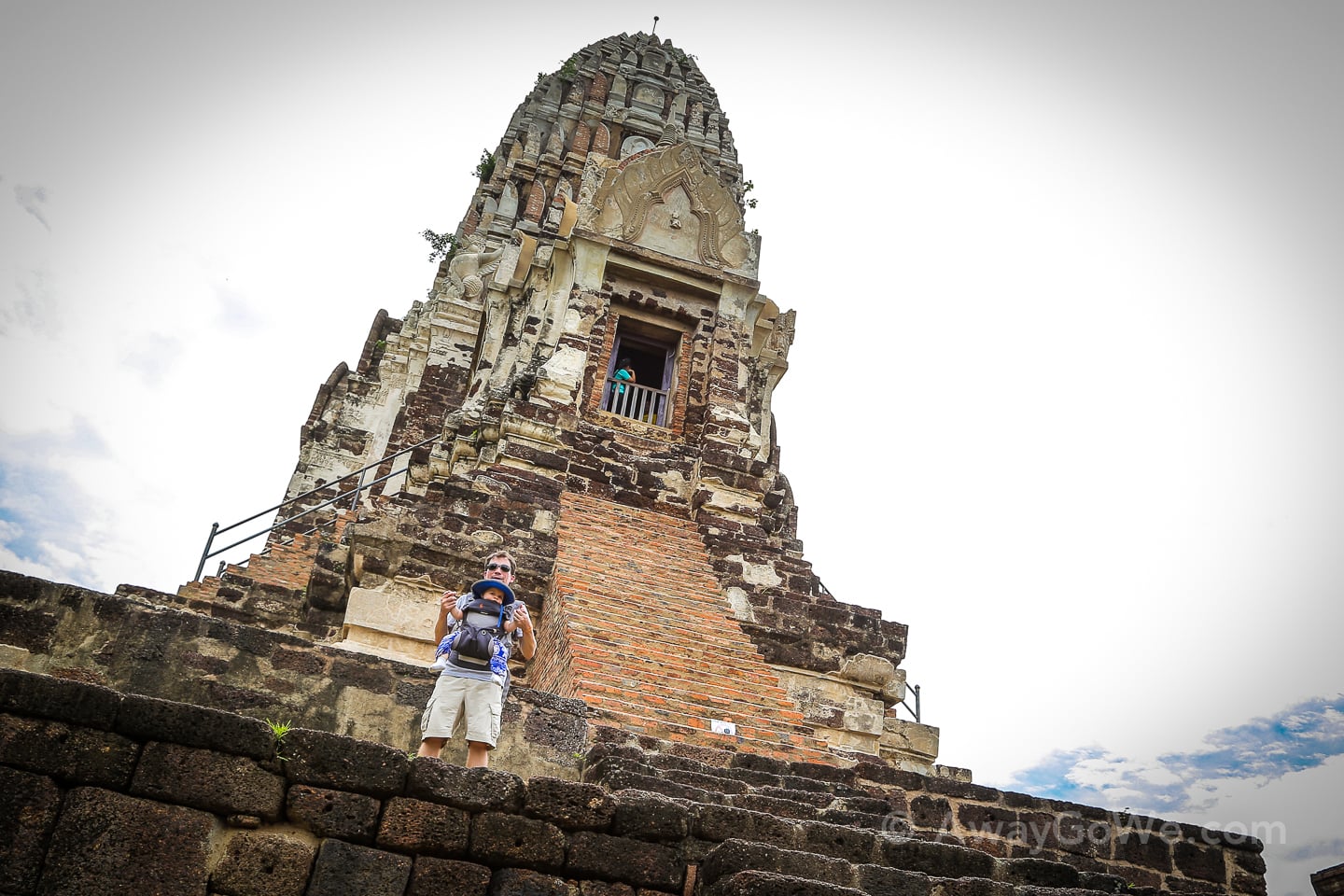
There are numerous ancient structures in the historical park, too many to count. Many are off limits for climbing, but some are not. Wat Ratcha Burana is one of the few that you can actually climb into, and if you’re brave (and not carrying around a baby), you can descend a dark and steep set up steps into the bowls of one of the more prominent structures.
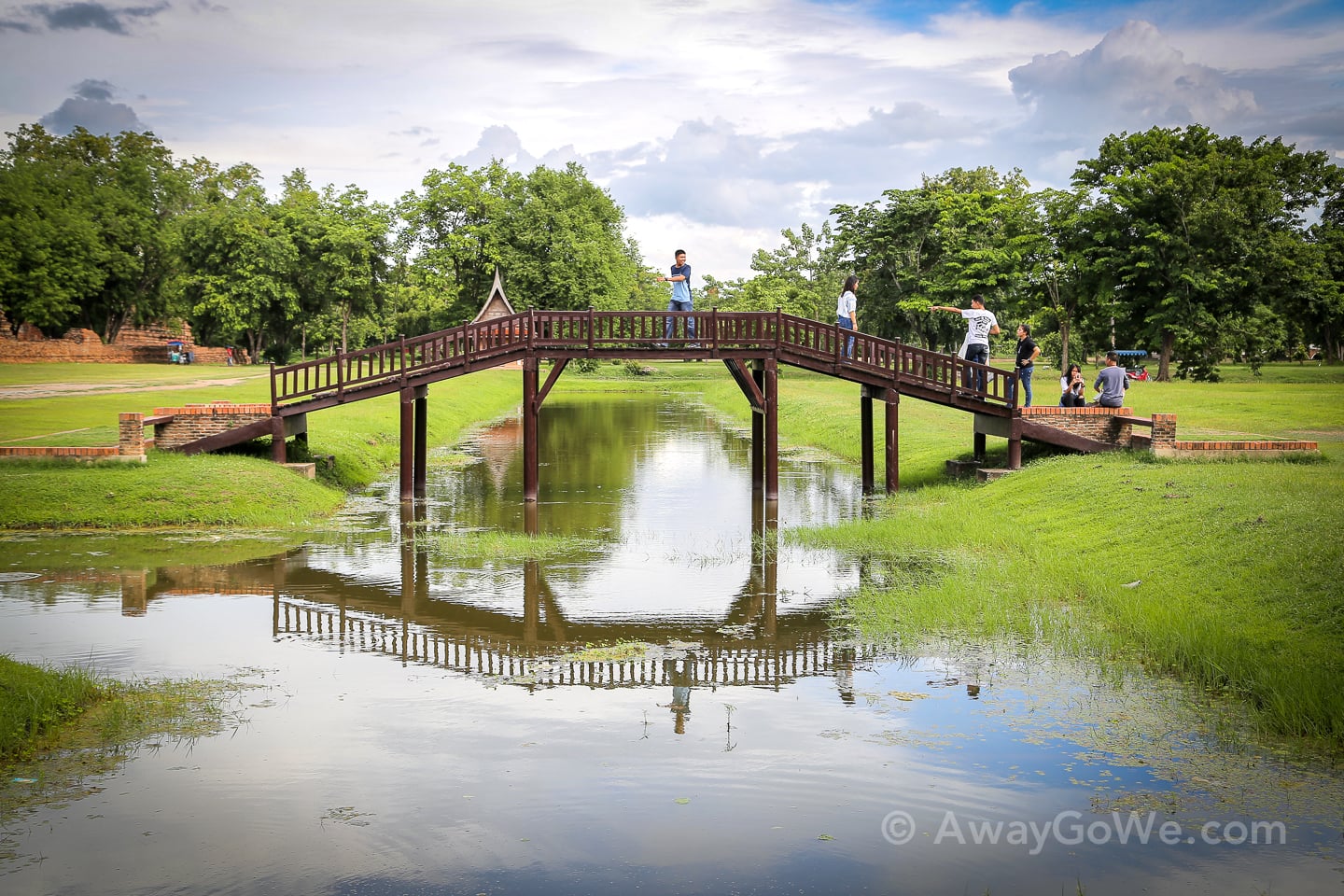
• • •
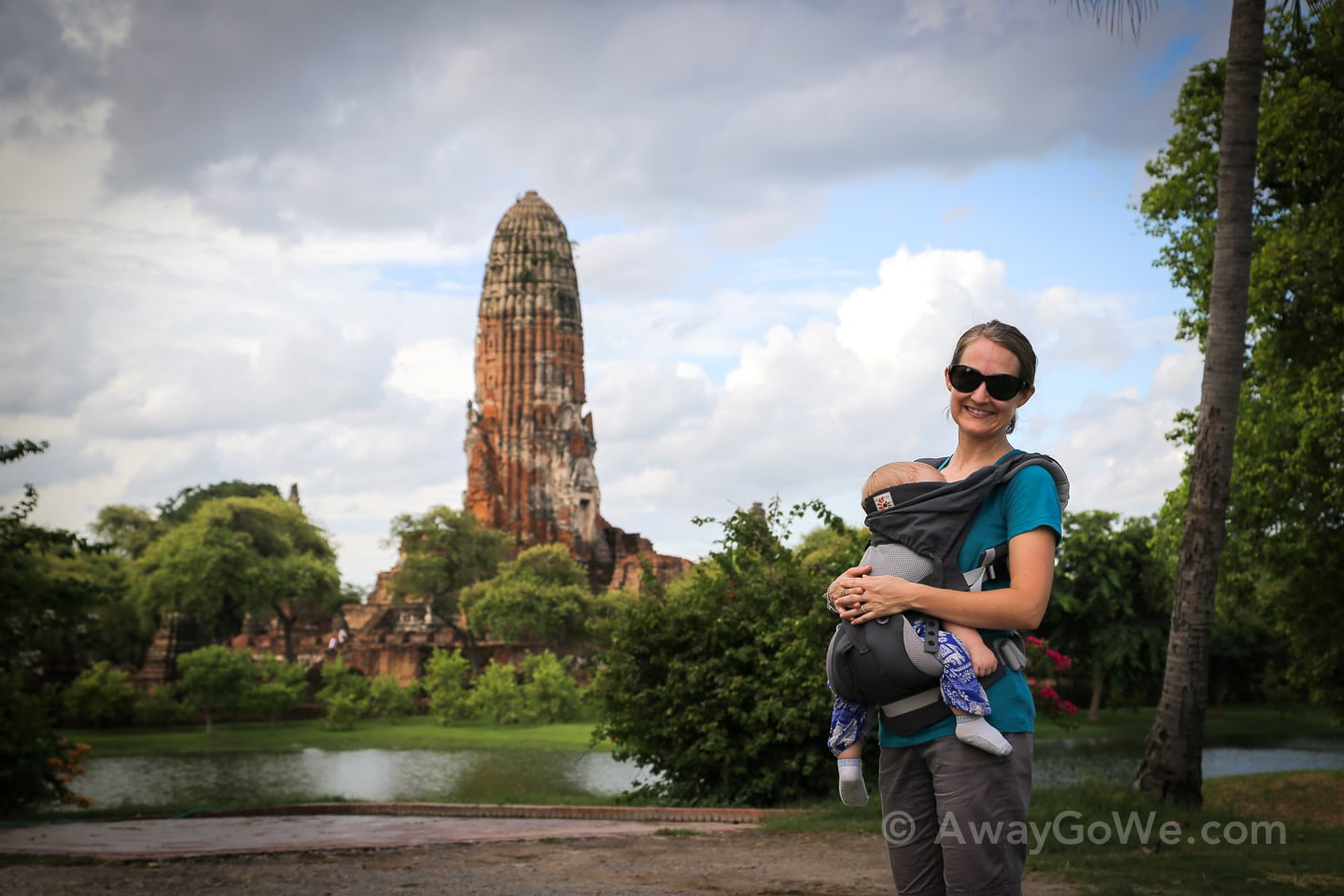
Wat Phra Ram
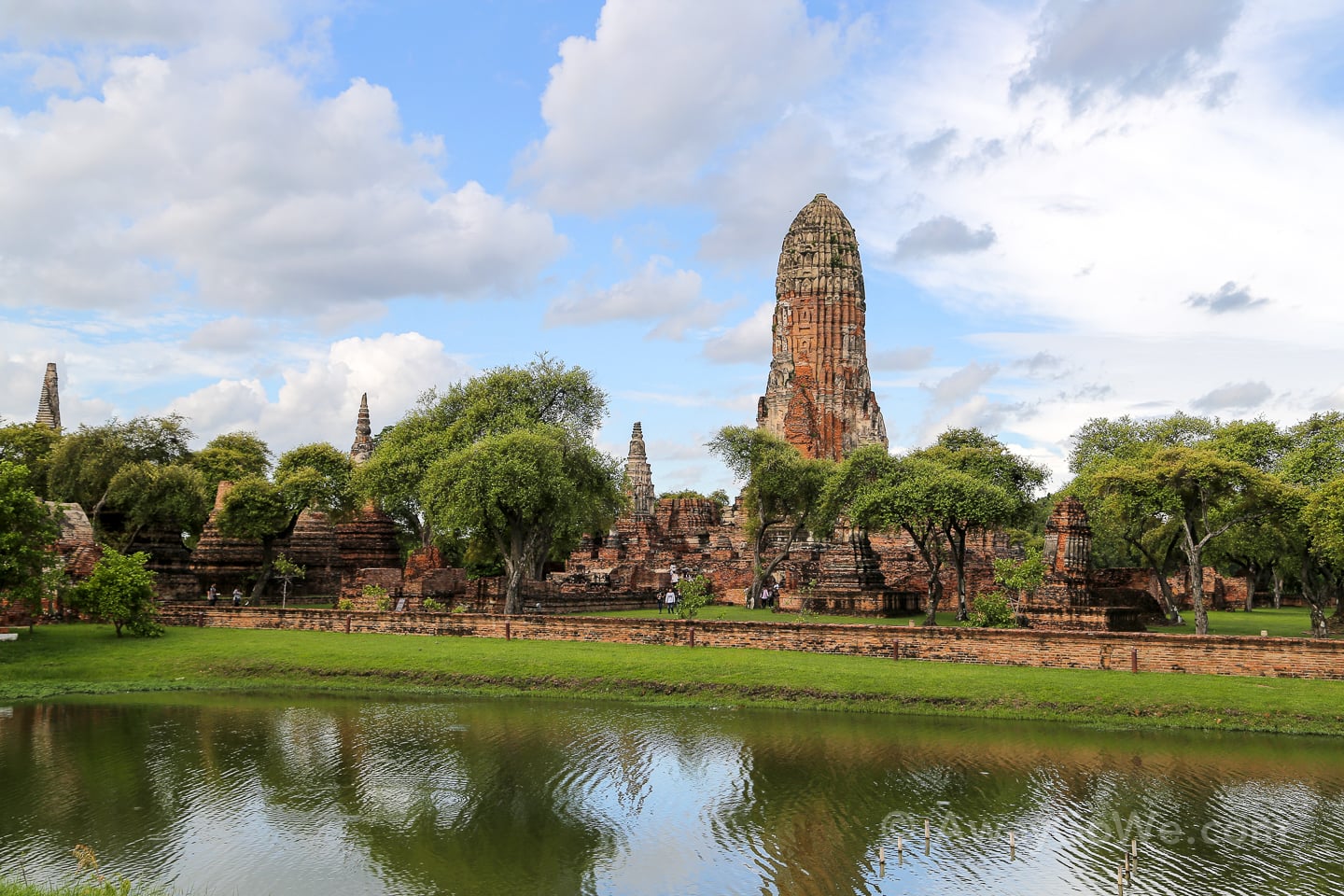
Walking around some of the more major sites, one can get some sense of what it might have been like to roam this vast city. With so many fascinating structures it’s also easy to forget that these are but a fraction of what was here in the golden age of the ancient city.
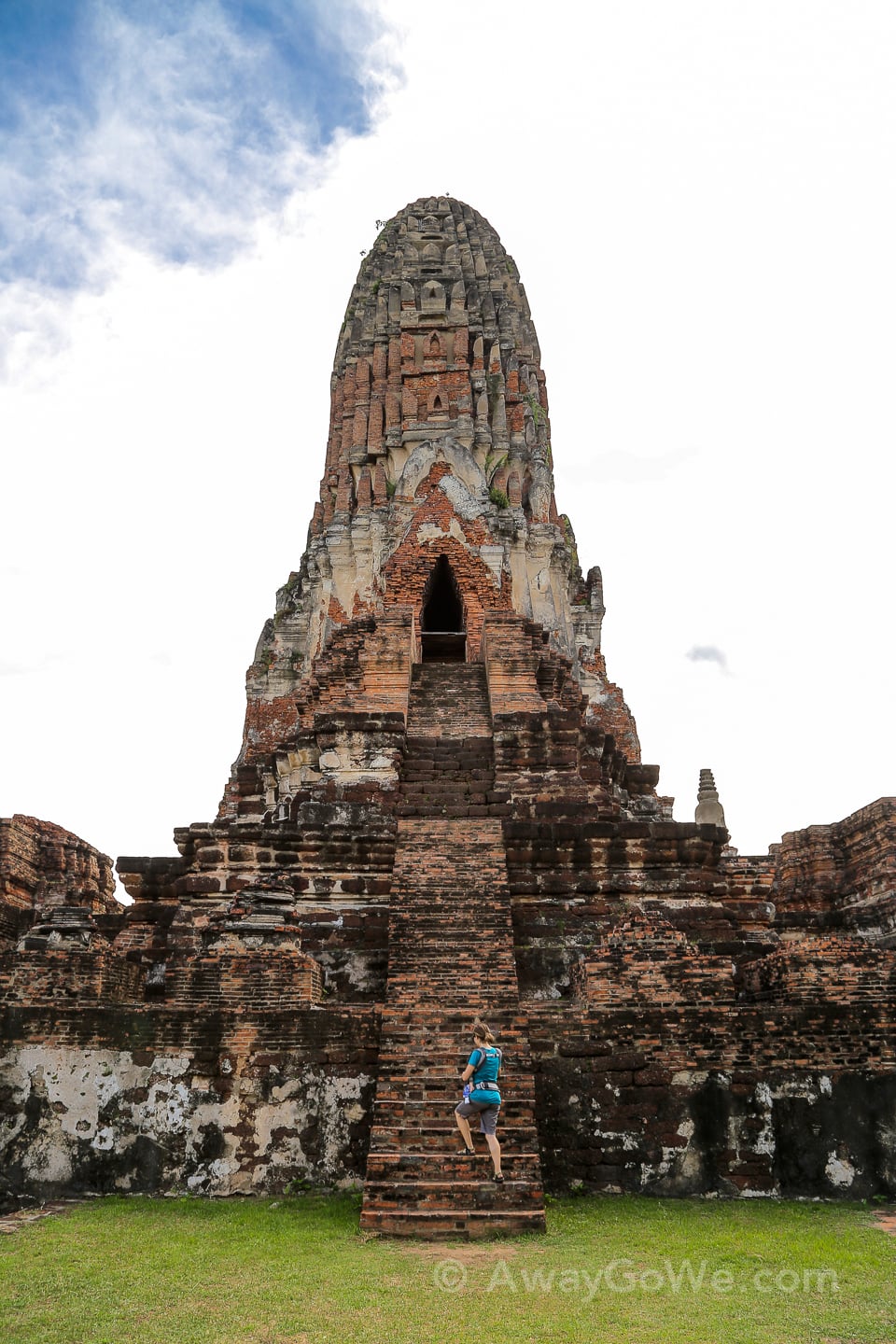
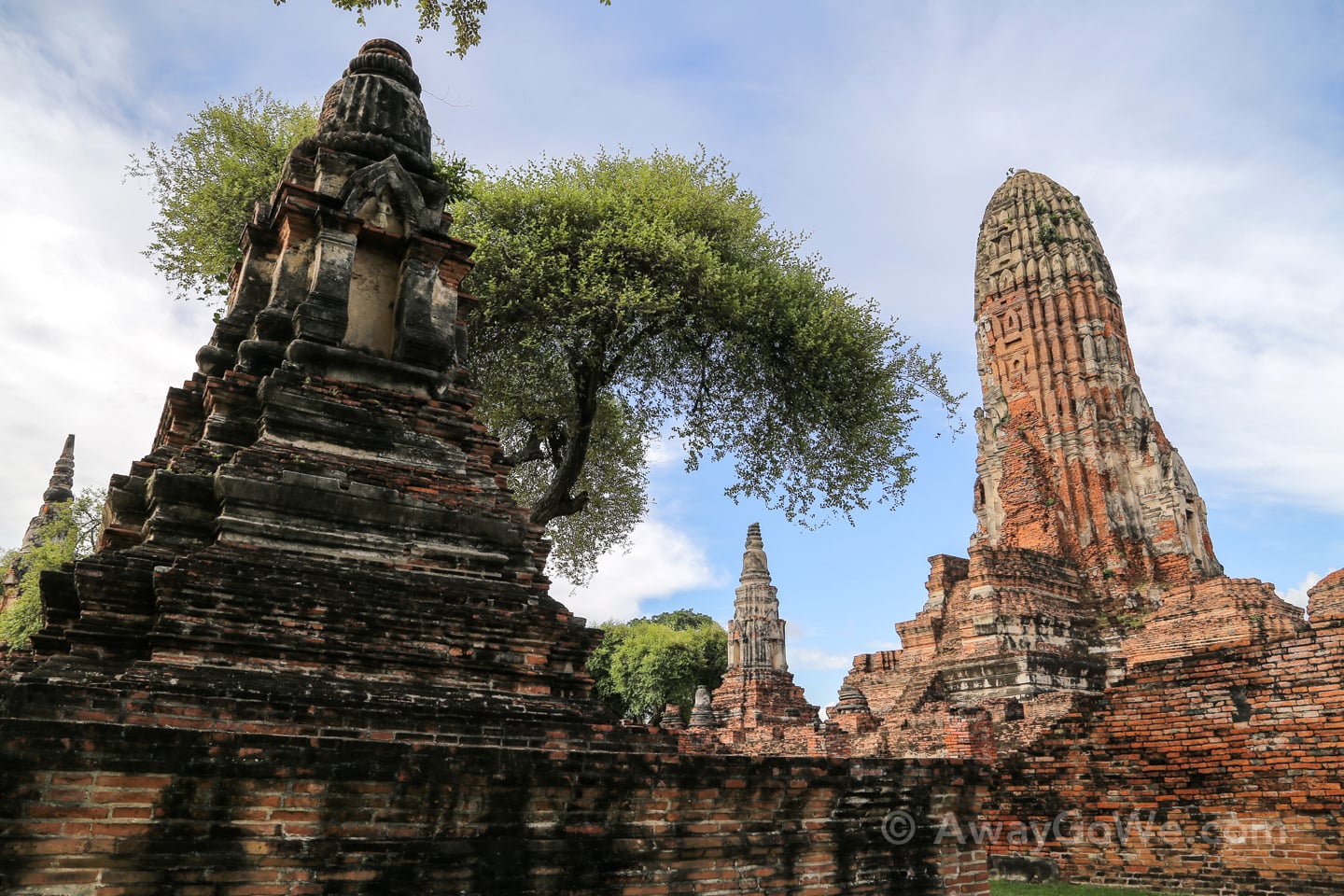
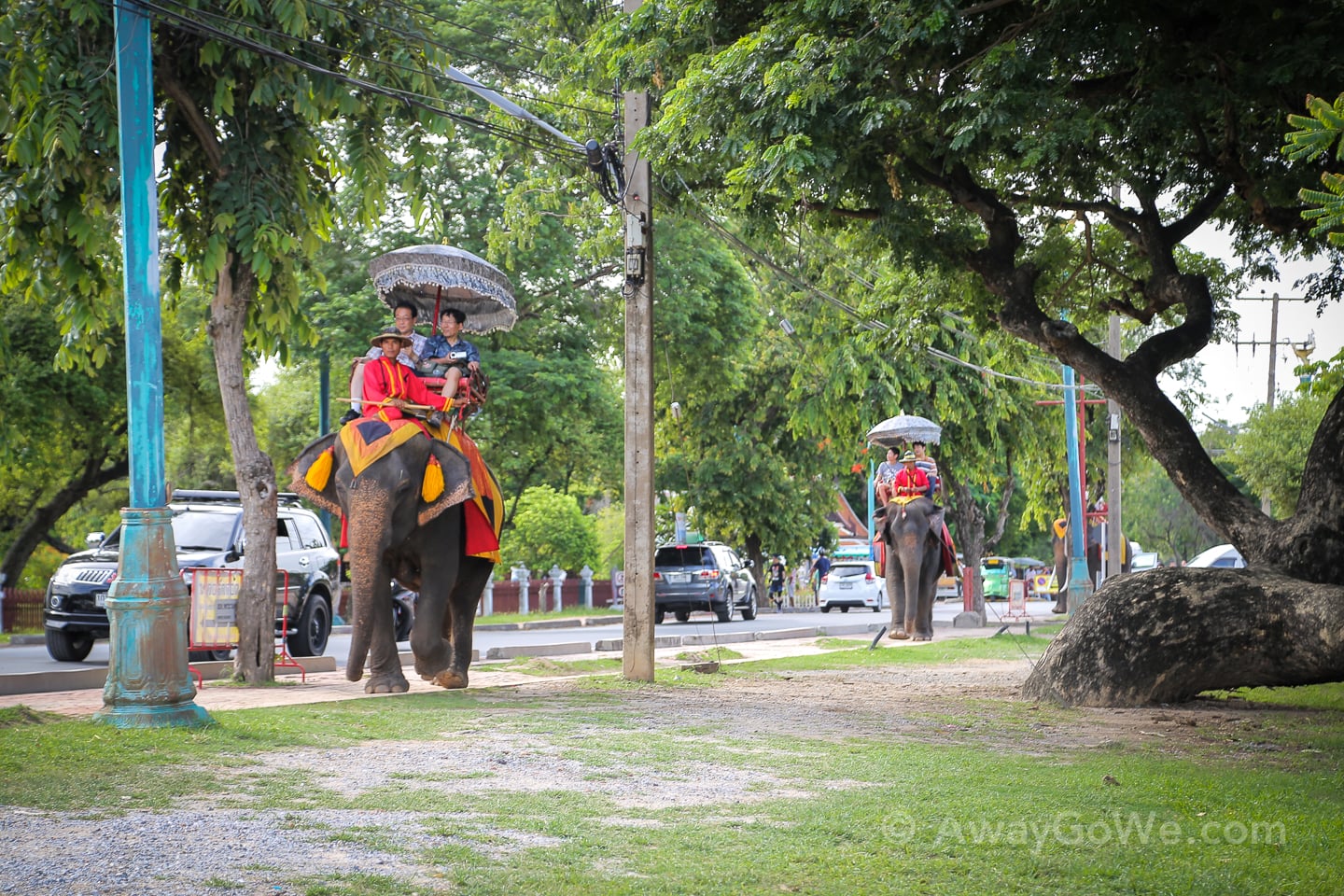
• • •
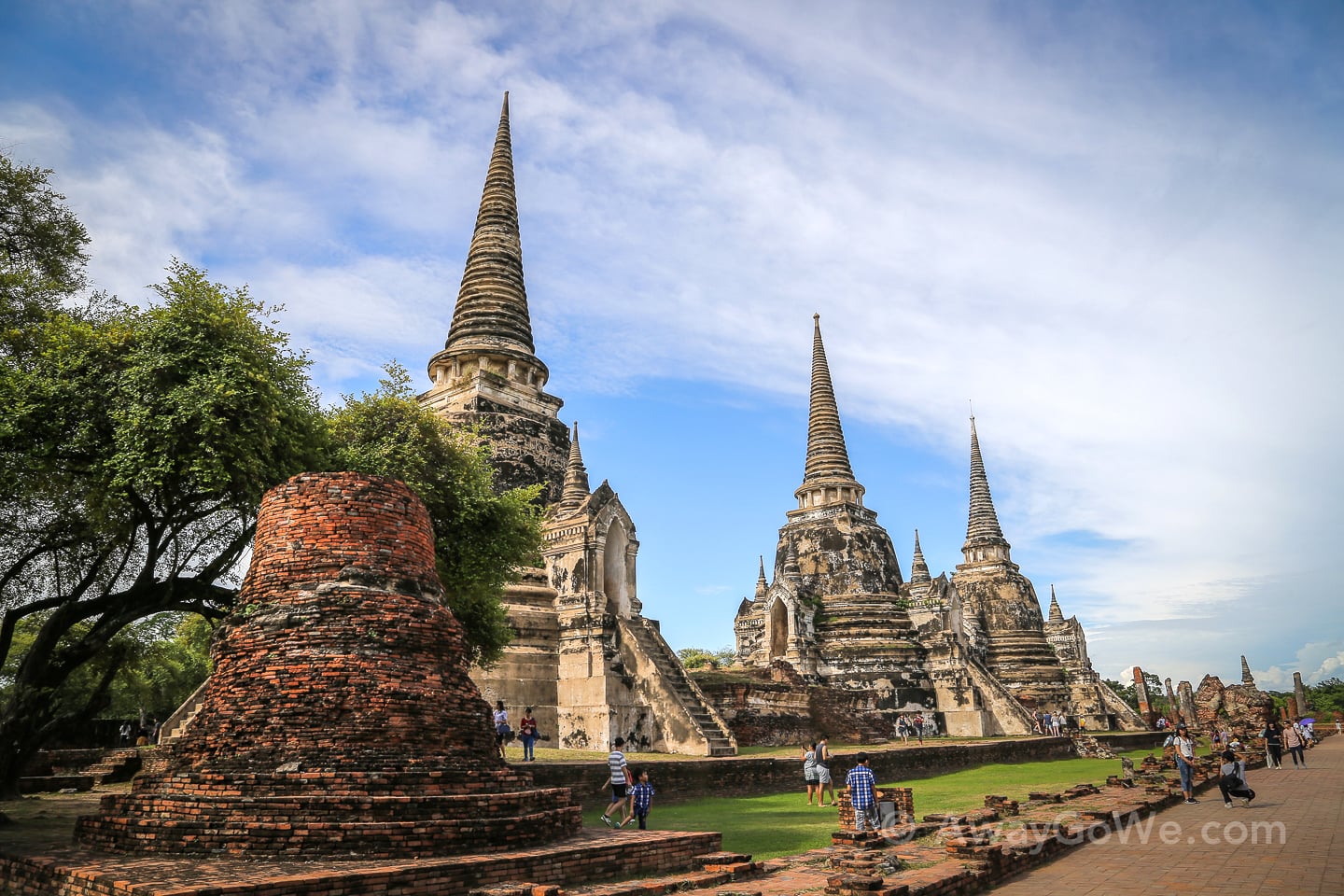
Wat Phra Si Sanphet
Perhaps the most impressive (and most photogenic) of all the temple sites is Wat Phra Si Sanphet (Temple of the Holy, Splendid Omniscient), largely characterized by three imposing and stunningly preserved stupas.
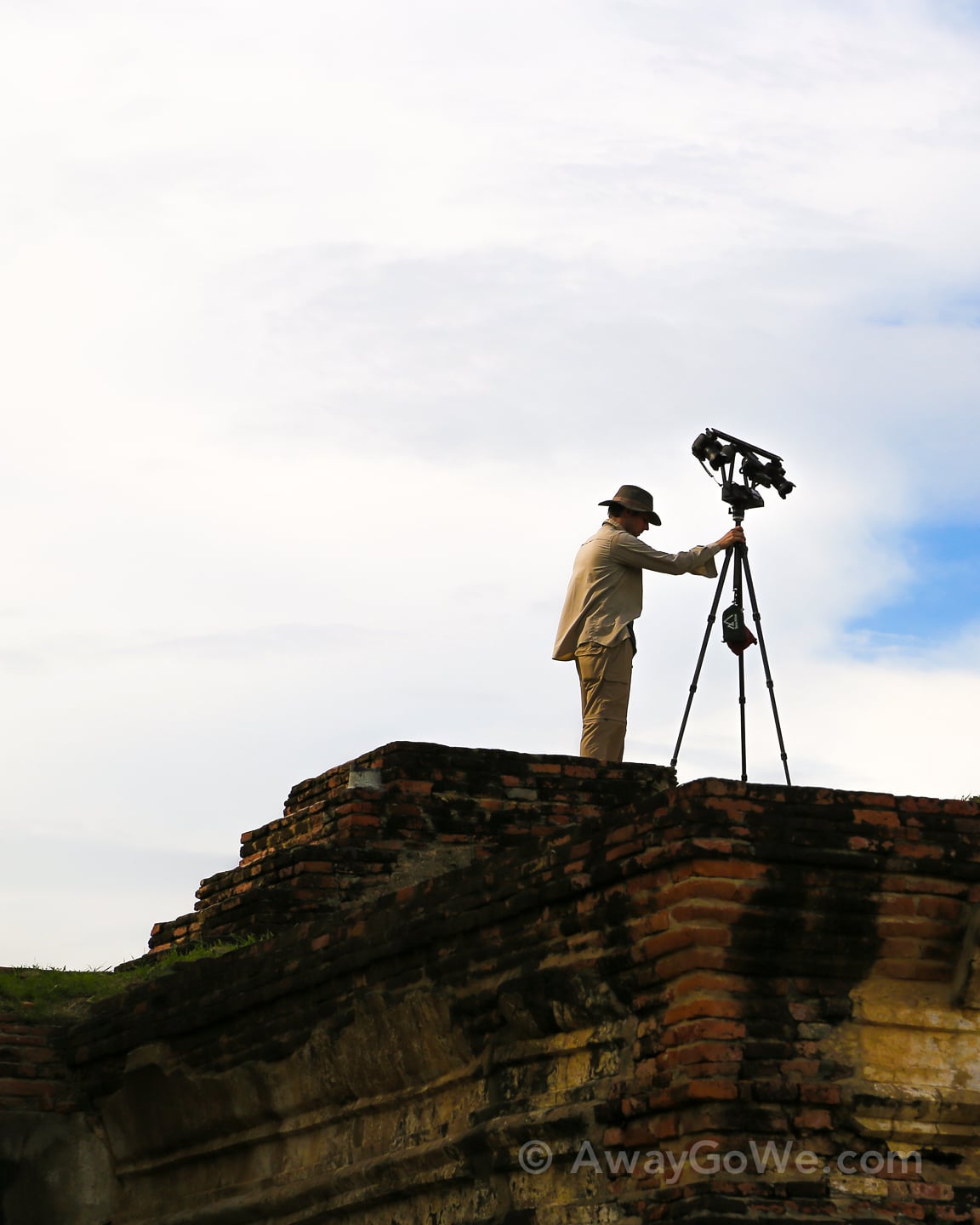
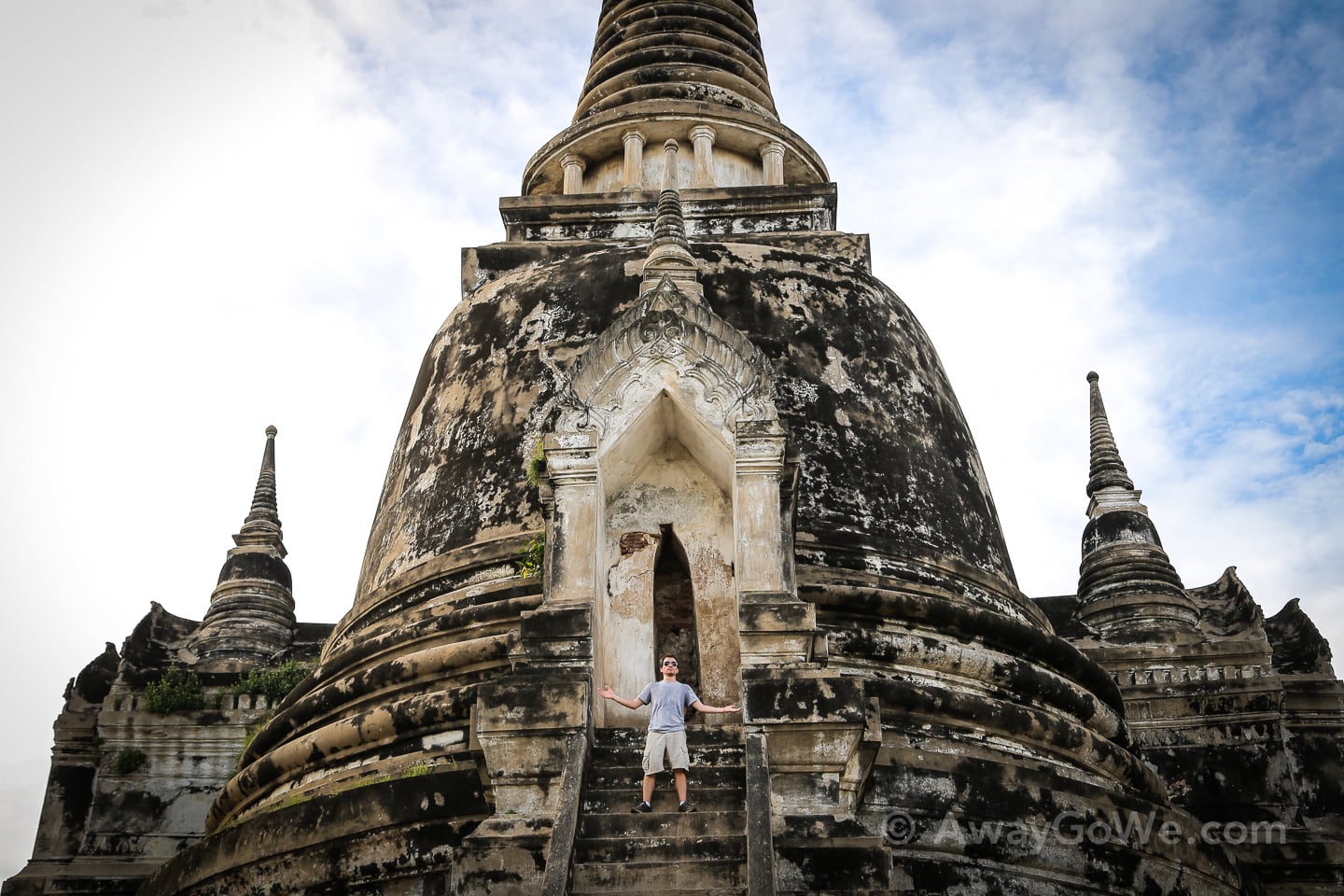
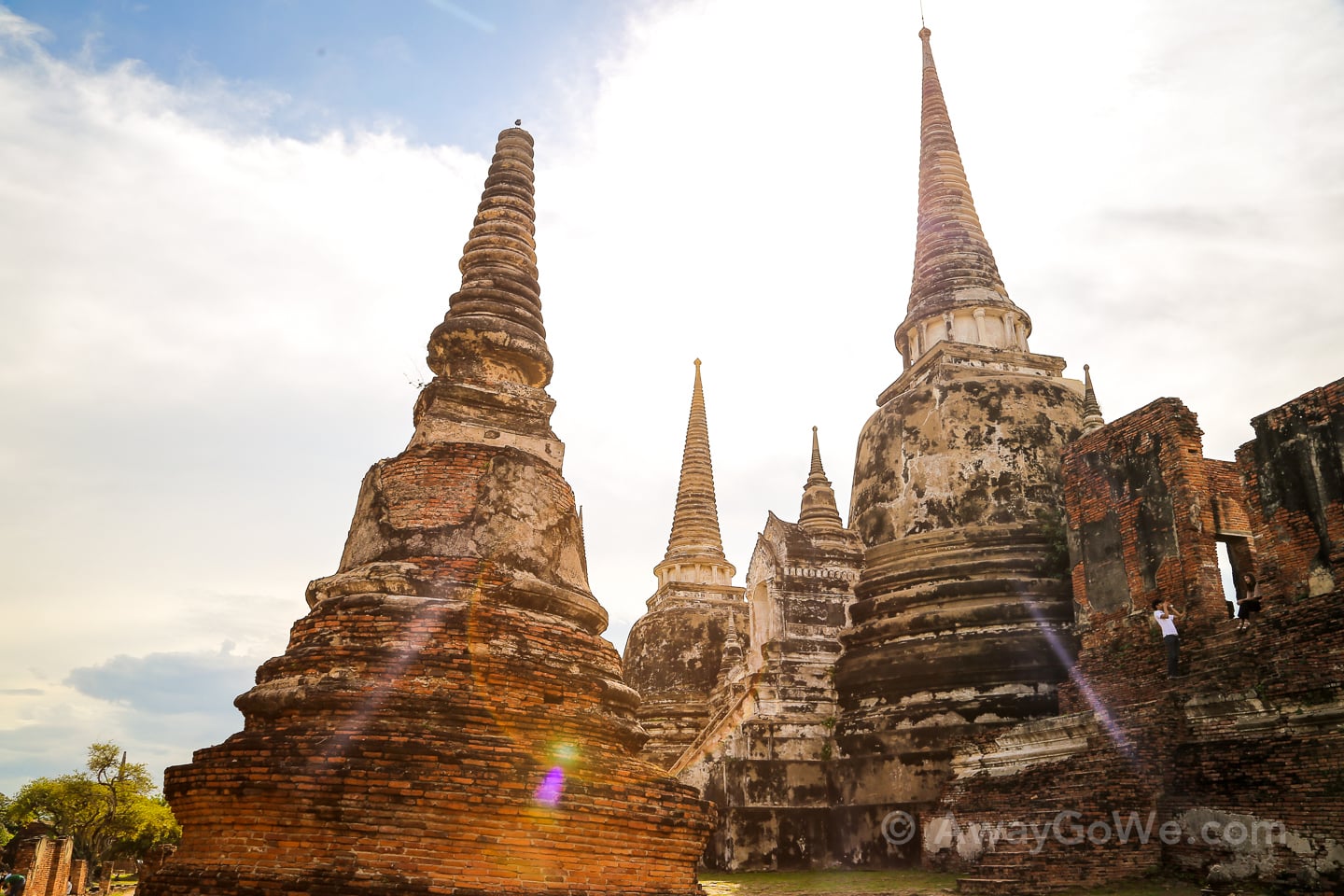
Sanphet was the holiest and nearest temple to the royal palace and served as a model for Bangkok’s Wat Phra Kaeo on the current Grand Palace grounds.
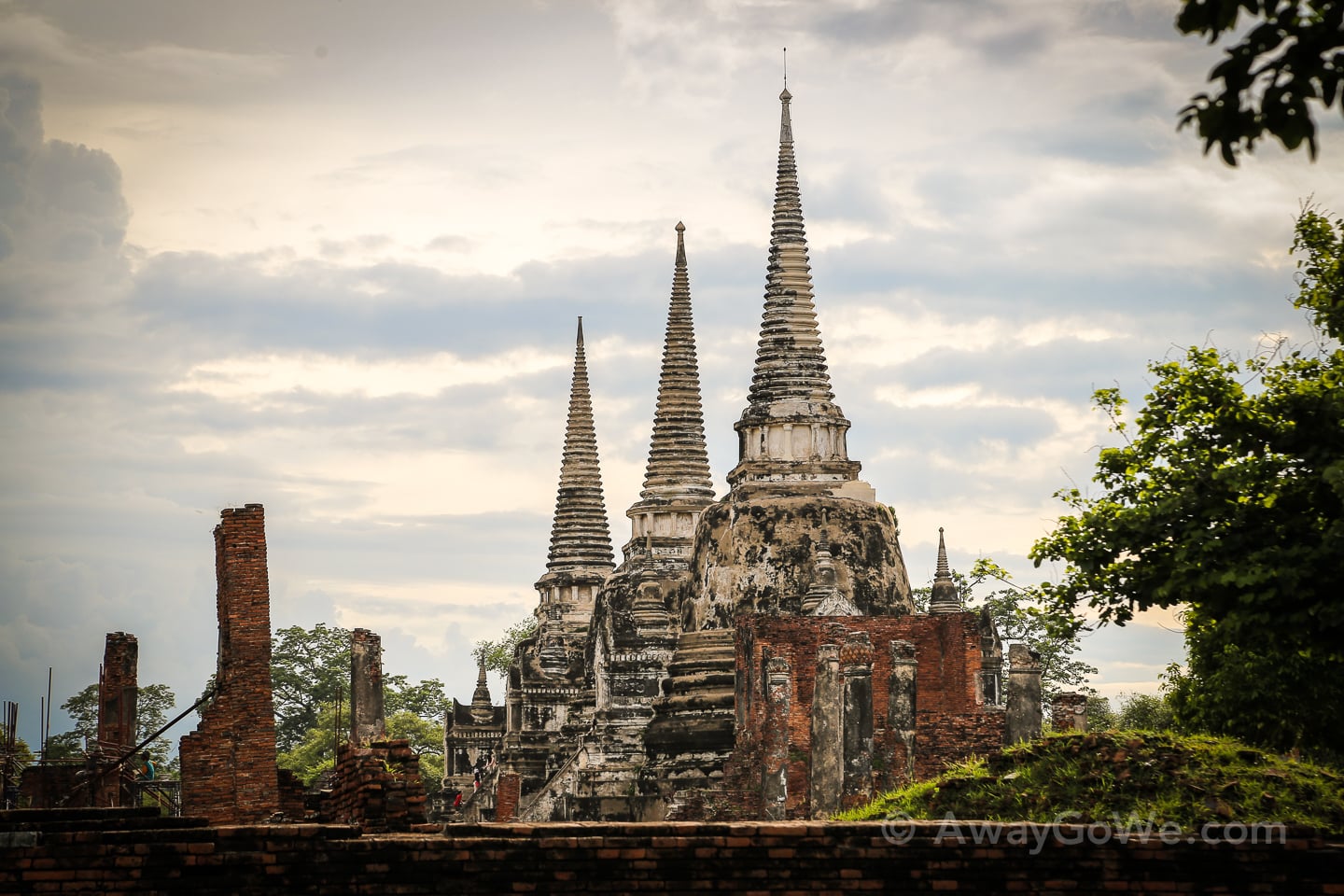
• • •
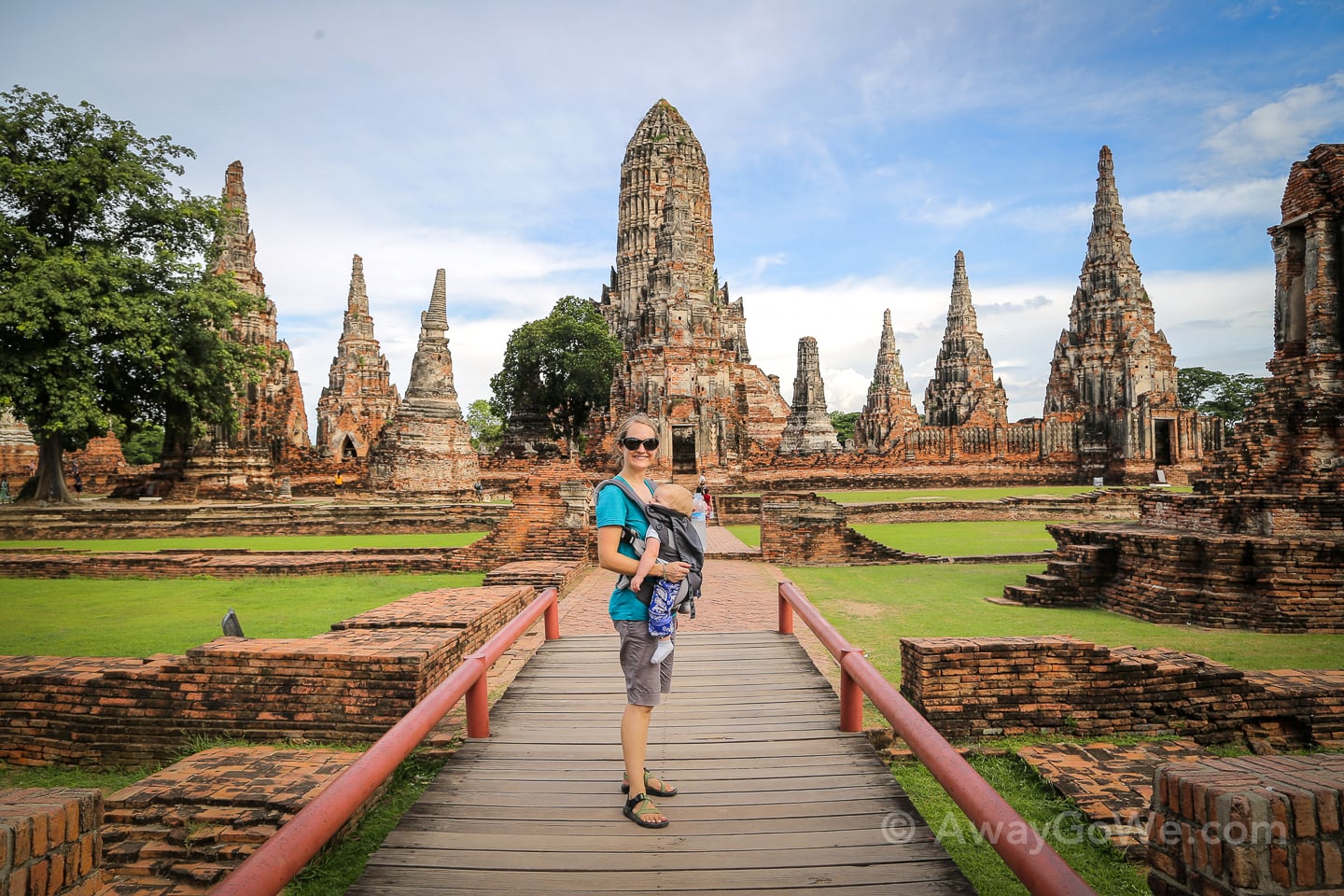
Wat Chai Watthanaram
Located southwest of the main cluster of archeological sites, just across the river, is Wat Chai Watthanaram, which despite its removed location is definitely worth a visit.
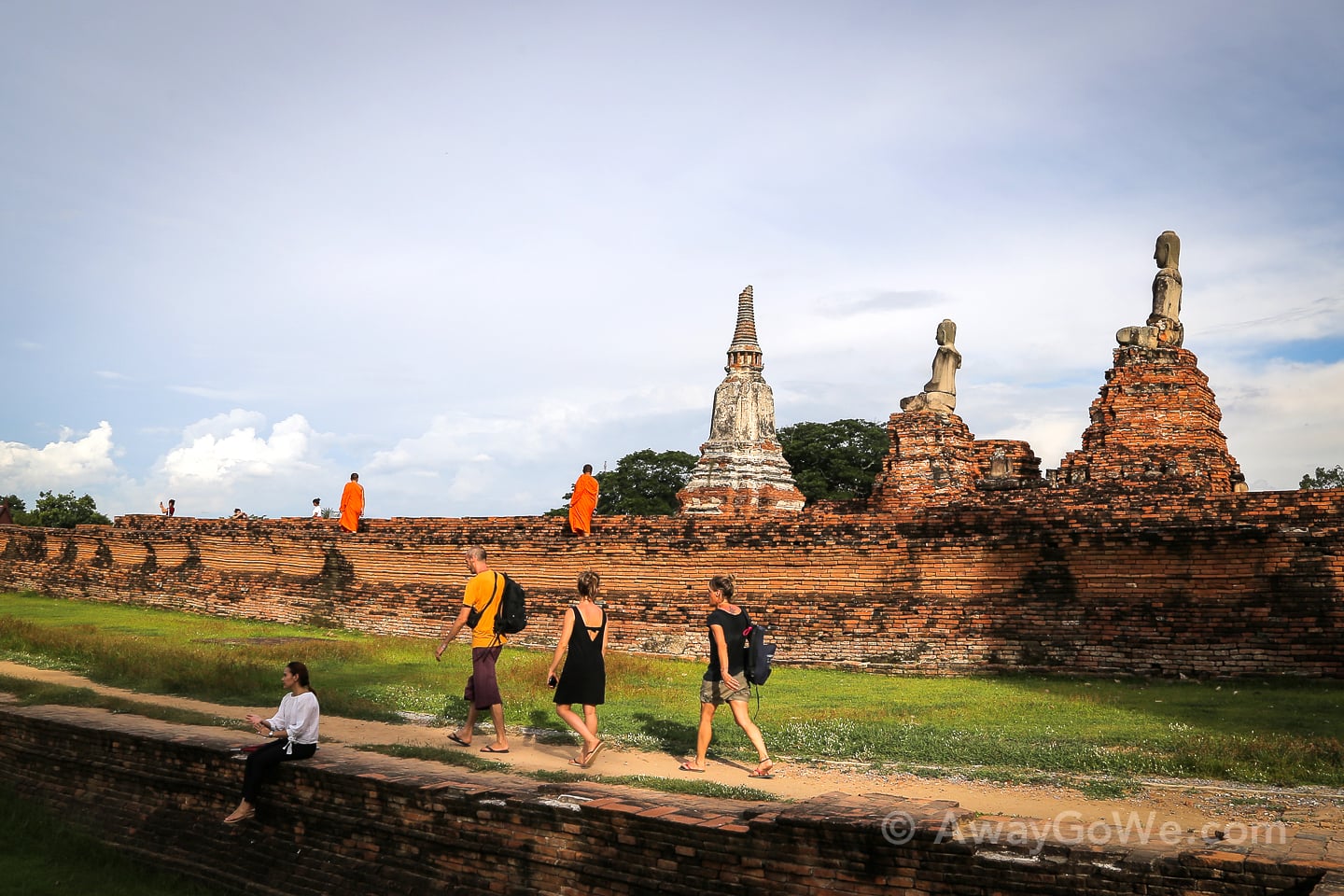
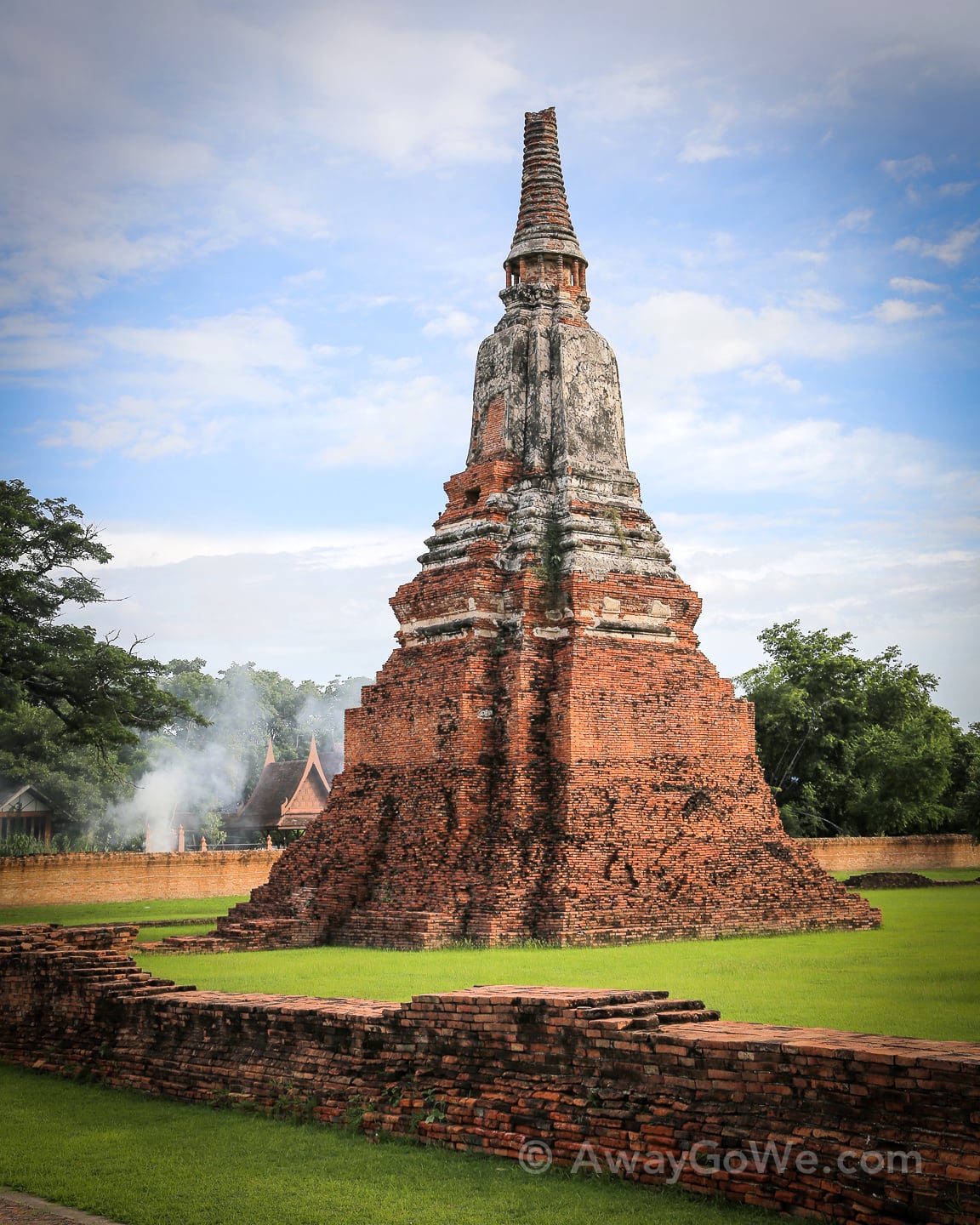
This Khmer-style complex is unique among the ruins of the historic park and is often compared to various sites in the more widely known Angkor complex in Cambodia.
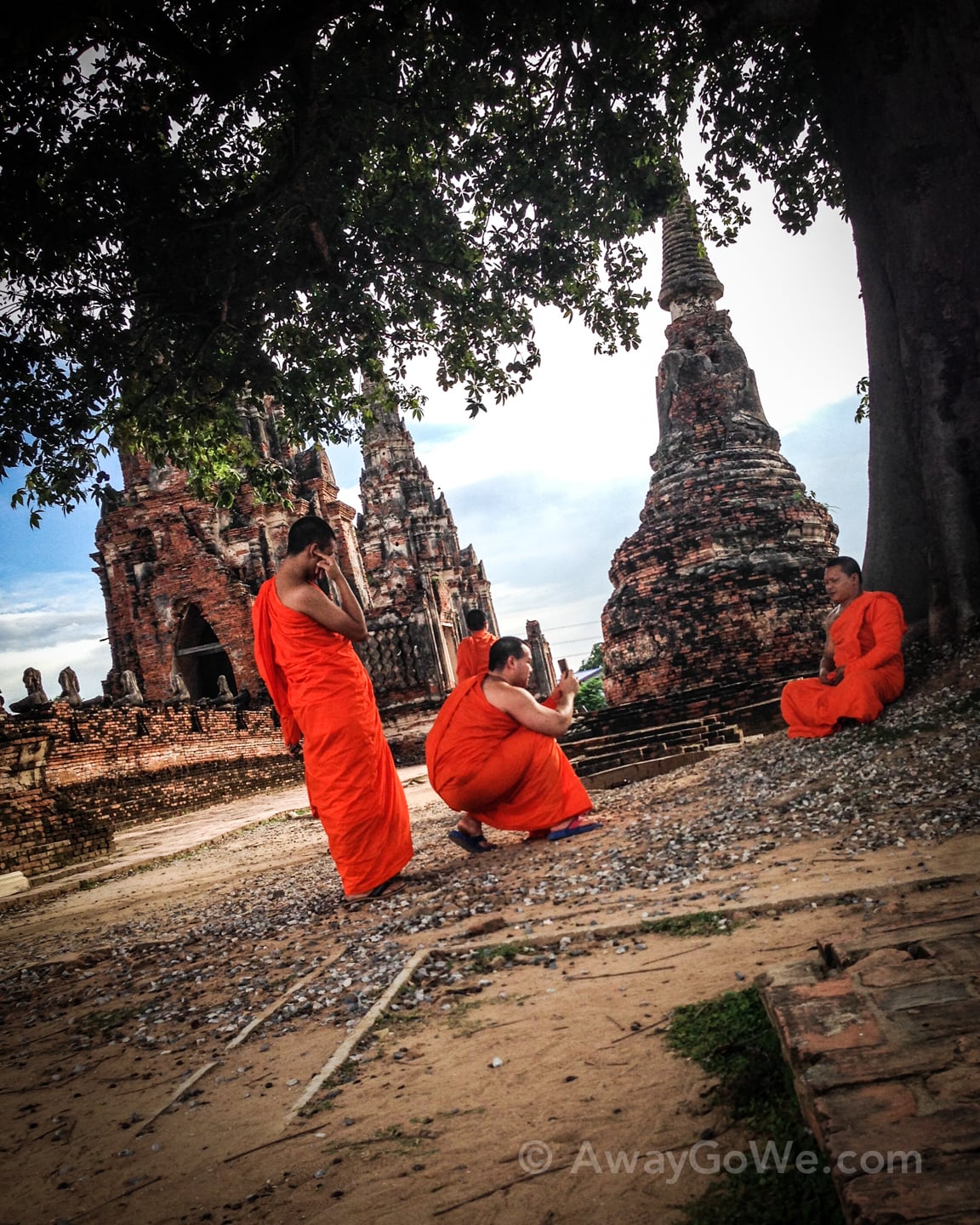
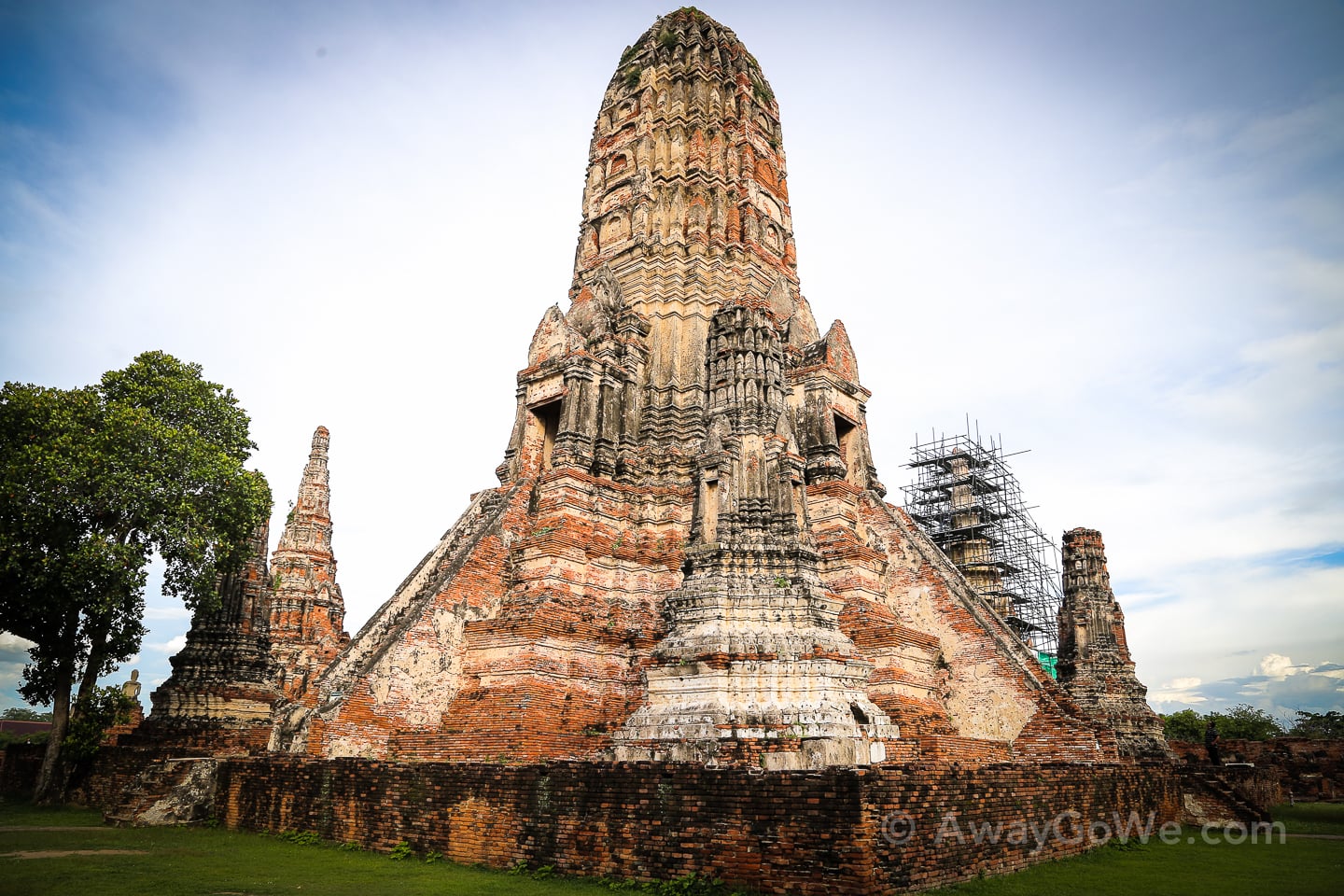
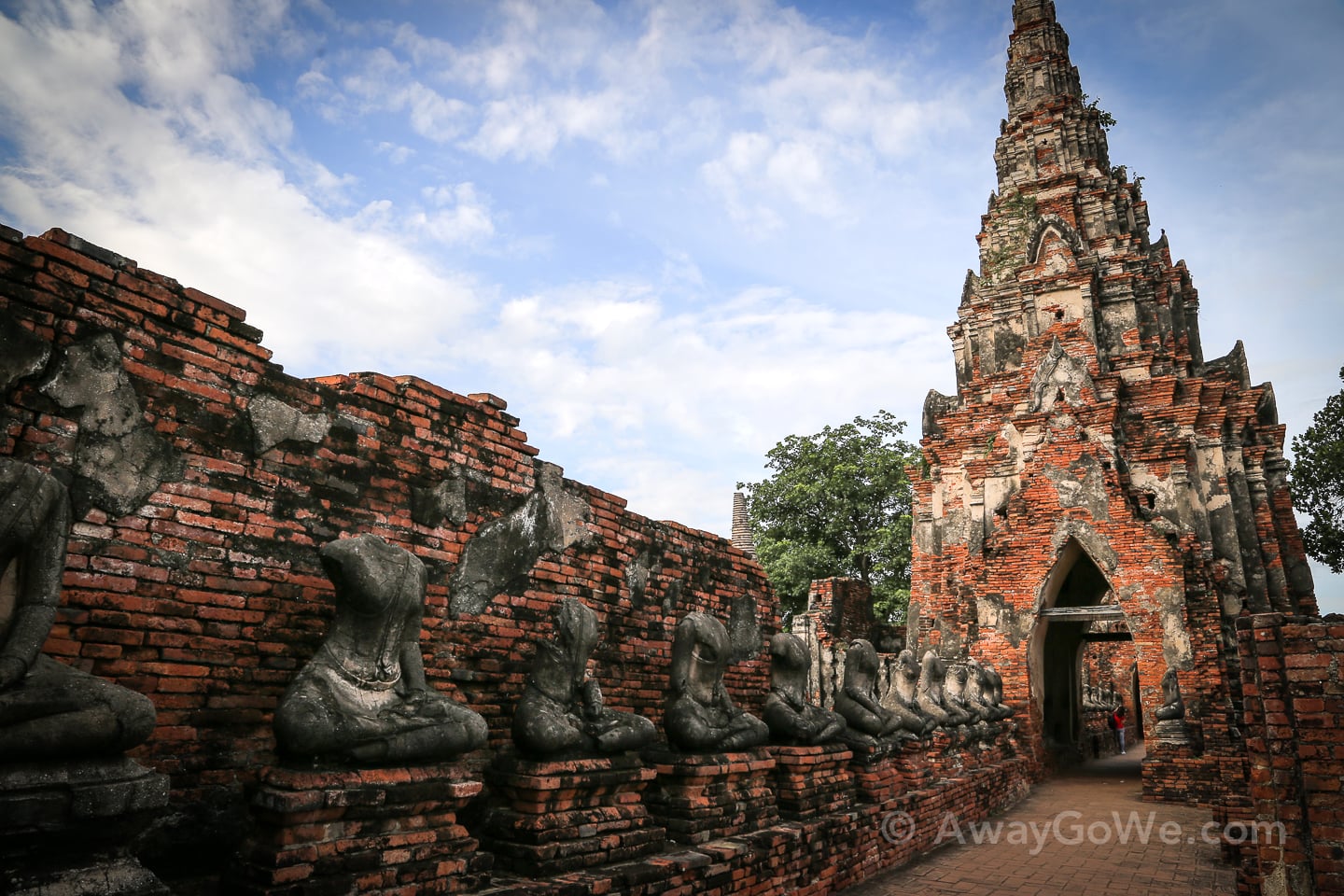
It’s presumed that these guys lost their heads to the Burmese in the course of the city’s sacking.
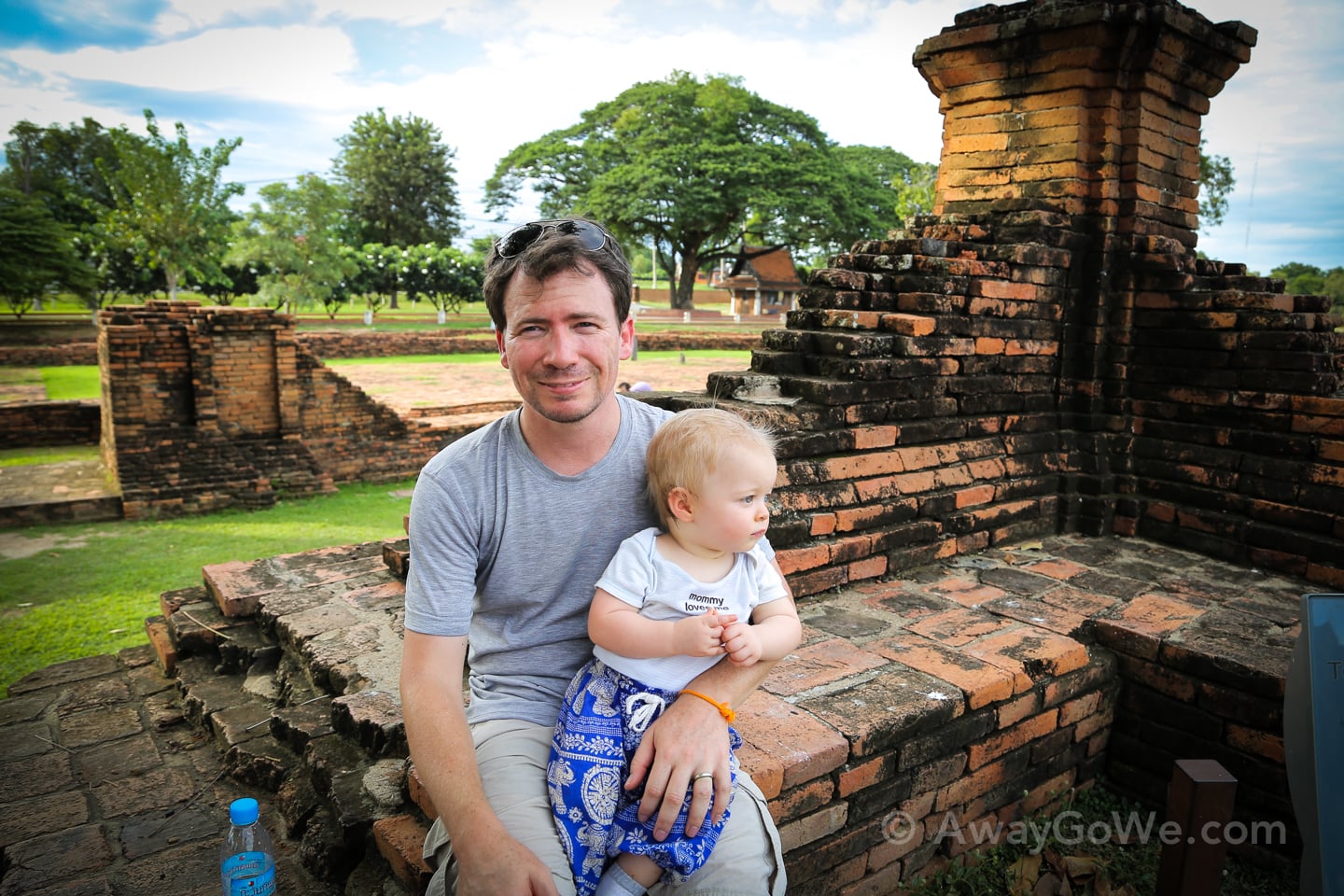
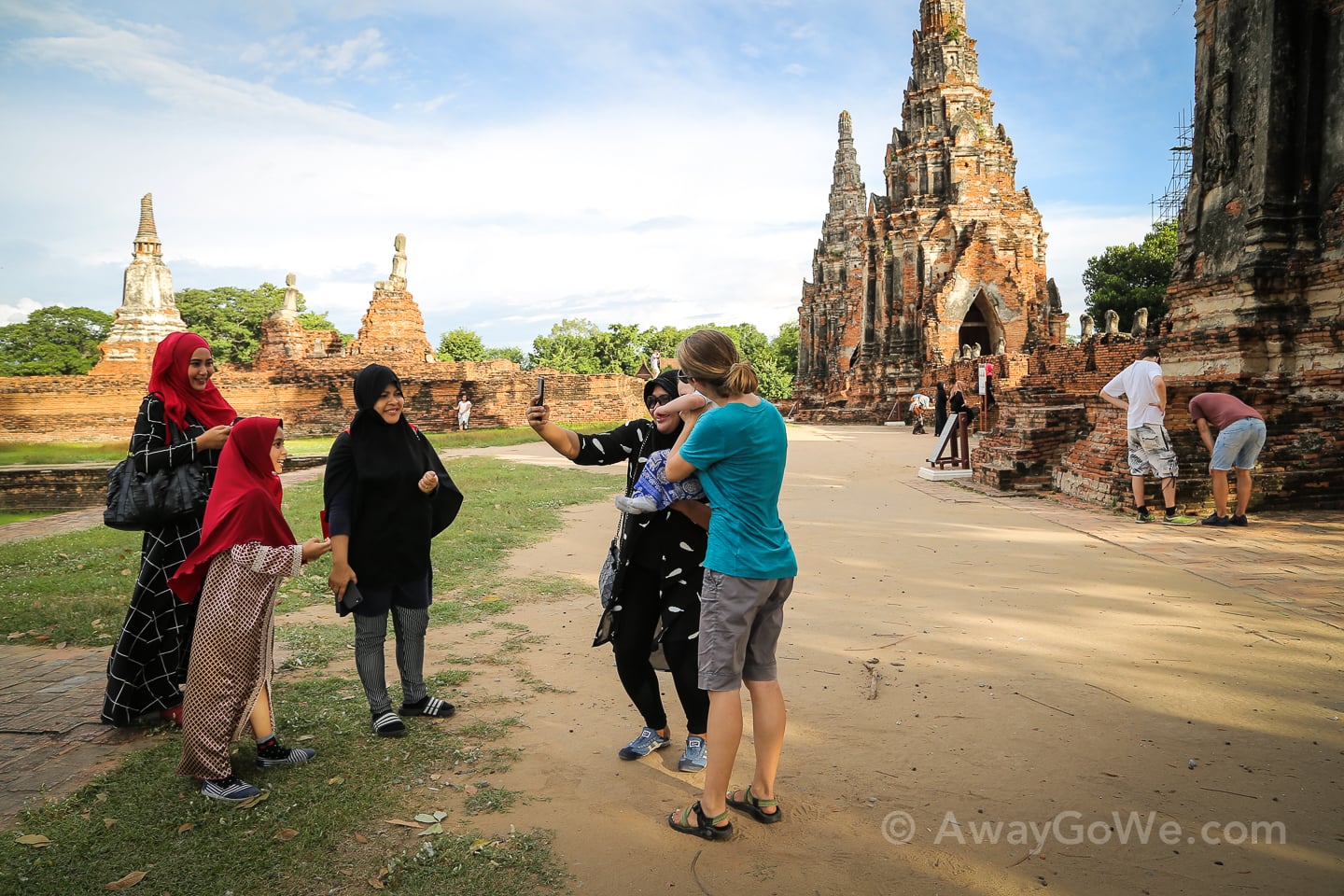
And, of course, Noe was not without his vast numbers of groupies from all over the world throughout the day. He’s turning into quite the little goodwill ambassador.
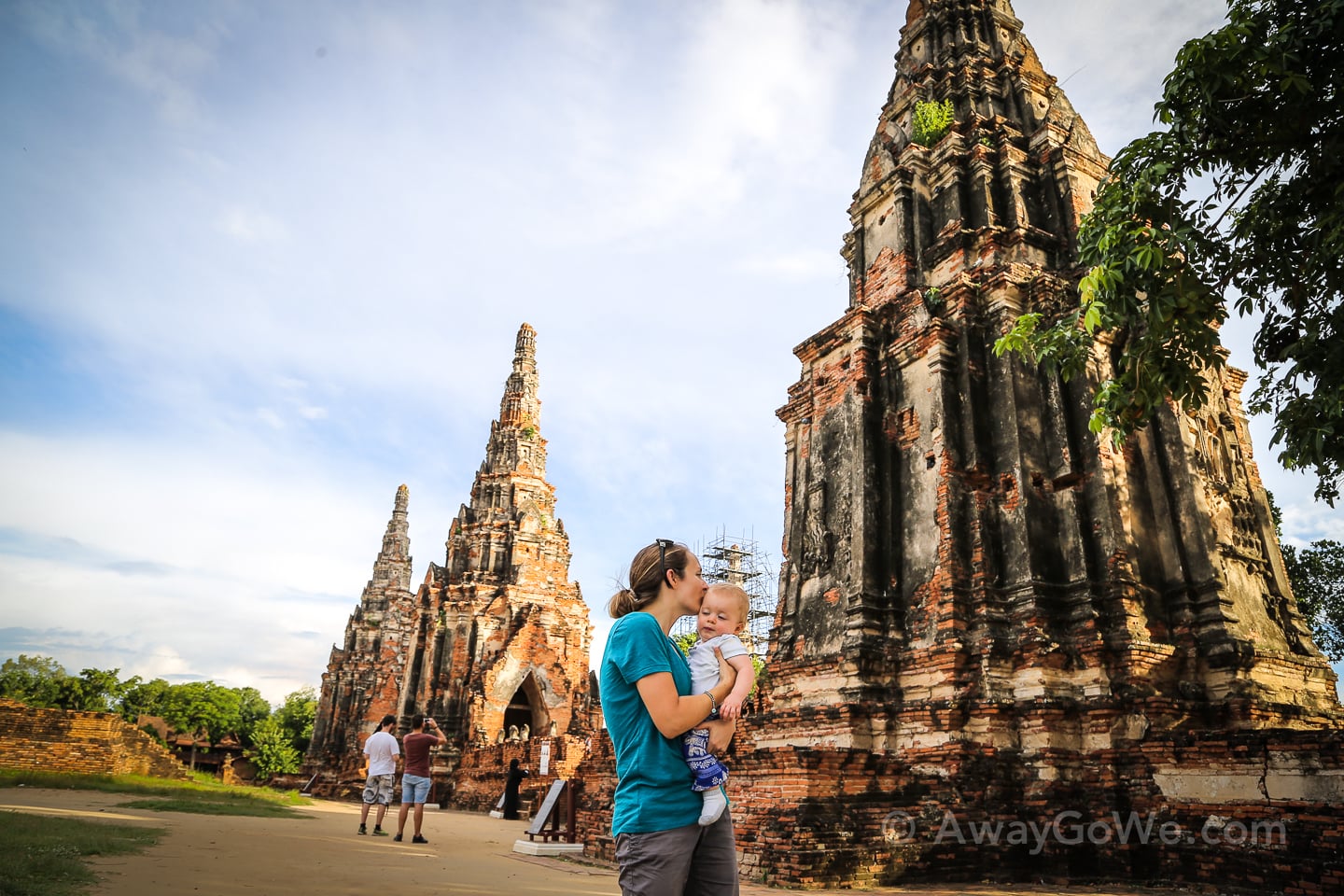
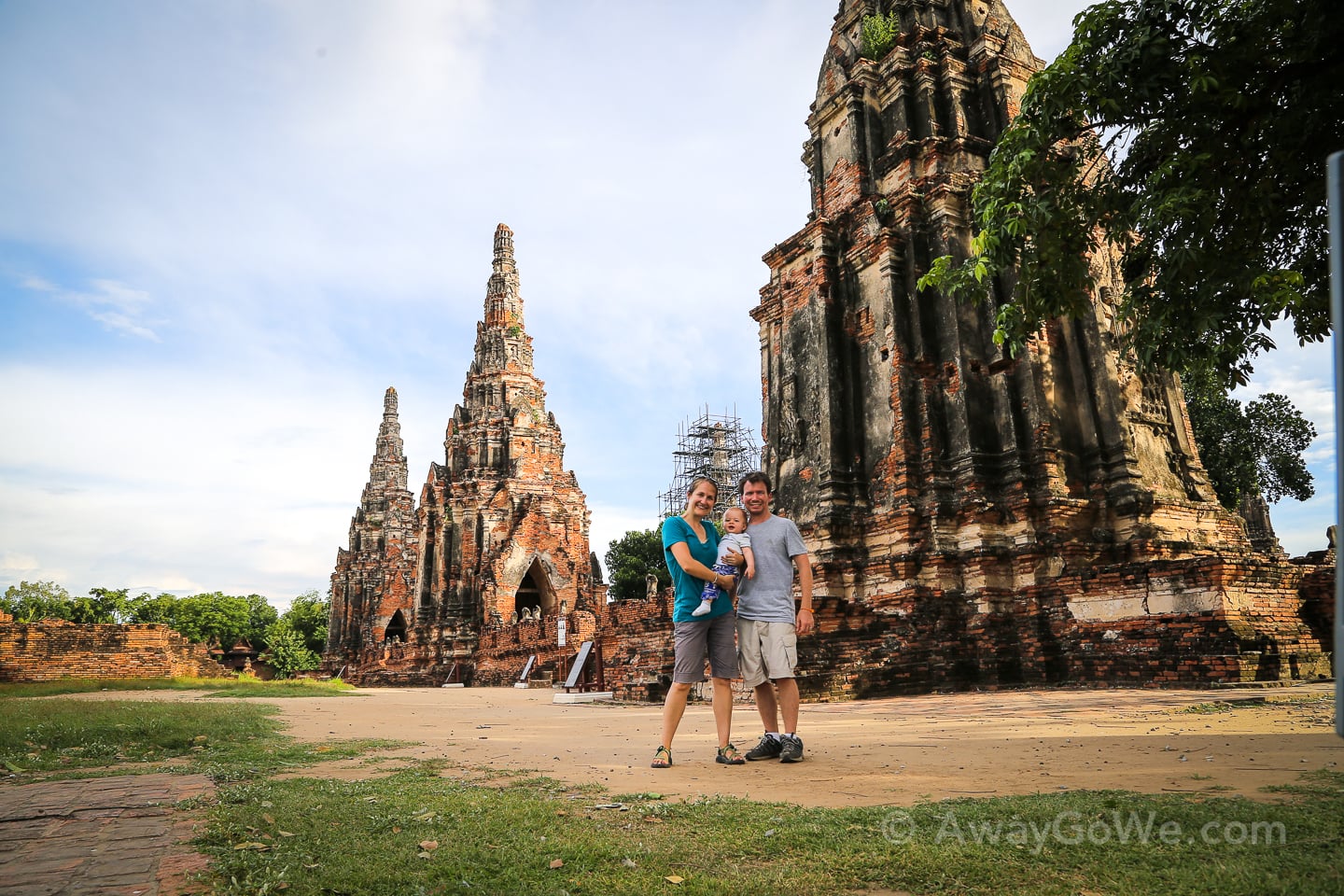
At one point, I even came out of a mini-market to find him hanging with this motley crew at a food cart near the train station.
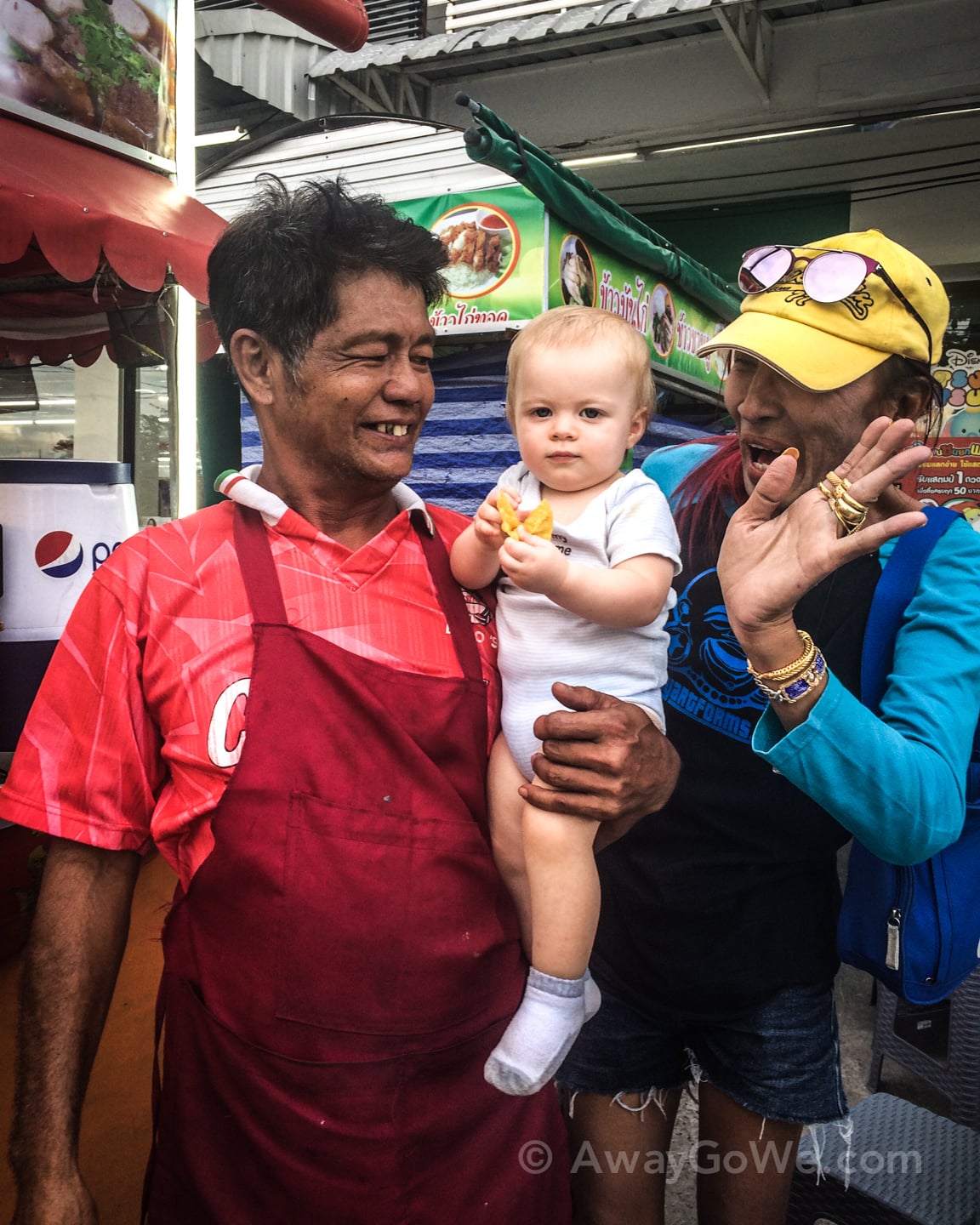
Um, Lori? You around? Ah, just slurping some noodles and handing our kid around, I see. I can’t even leave you guys for five minutes any more. Sheesh.
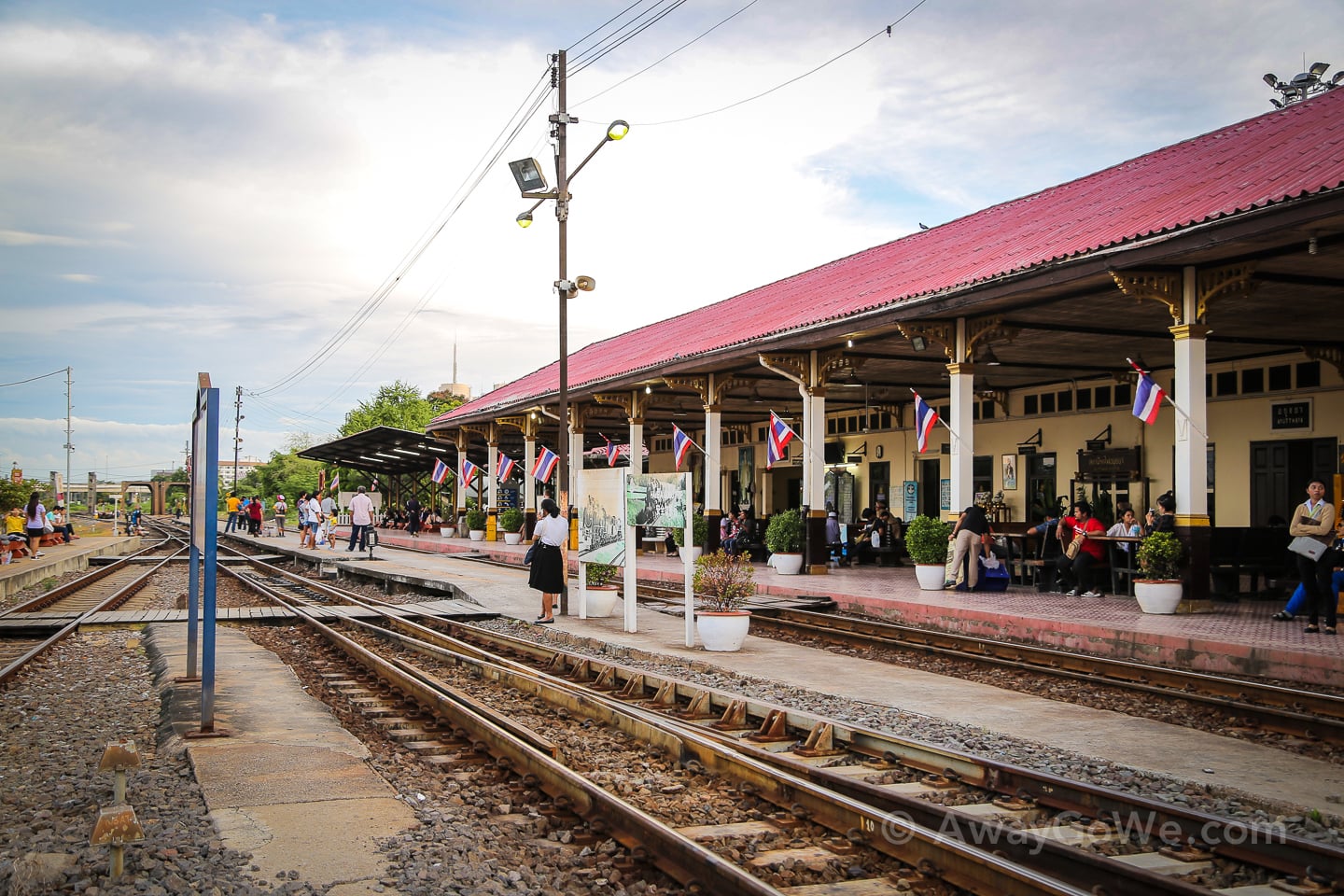
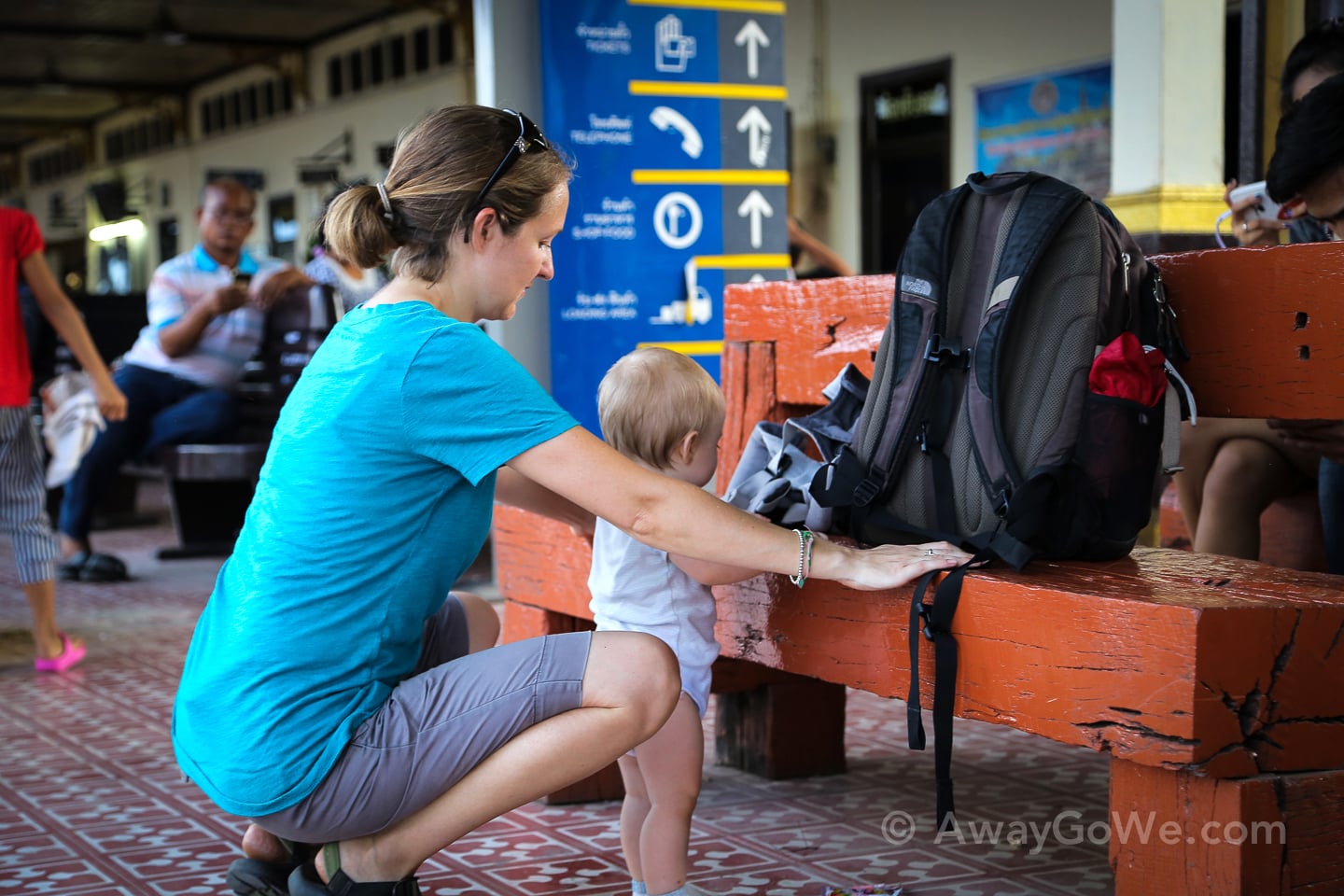
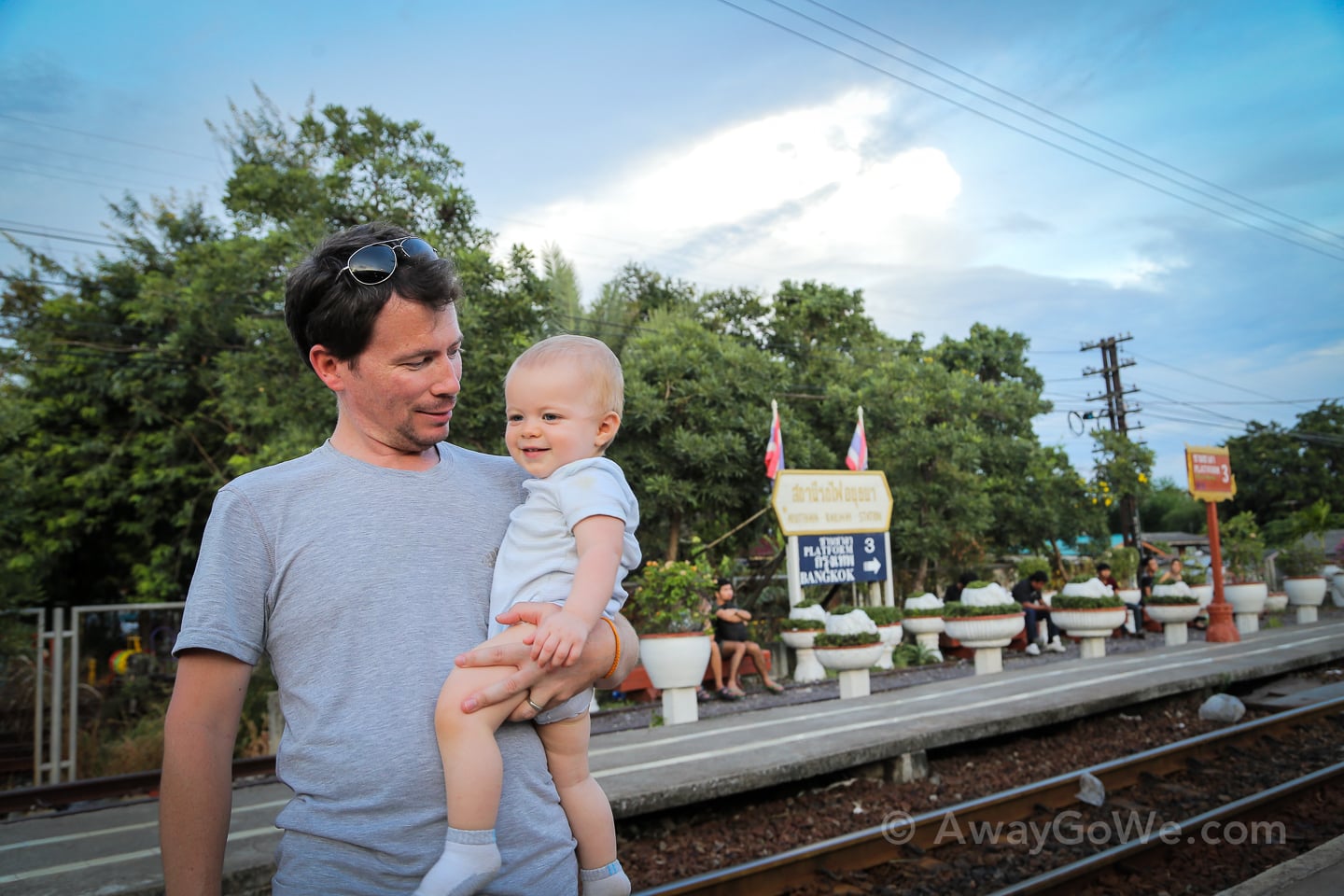
After enjoying a nice evening waiting for the train at Ayutthaya station, we boarded our “ordinary” service to Bangkok. 3rd class, baby. Hard seats, open windows, monks — the critical ingredients for a proper train journey in Southeast Asia.
I will say that we were unprepared for how packed the train would be returning to Bangkok. In hindsight, we shouldn’t have been surprised, given that it was a Sunday evening and this is the busiest mainlines in the country. I spent the first hour standing and rocking Noe to sleep (though a number of kind individuals offered me their seat…because of the baby, and all. But if you’ve ever rocked a one-year-old to sleep in a carrier, you know how much easier it is to do standing.
As the crowds thinned out as we got deeper into the city, with my legs killing me and Noe sound asleep, I decided to take my chances and take a seat. Fortunately, the Mister slept like a baby the entire way home.
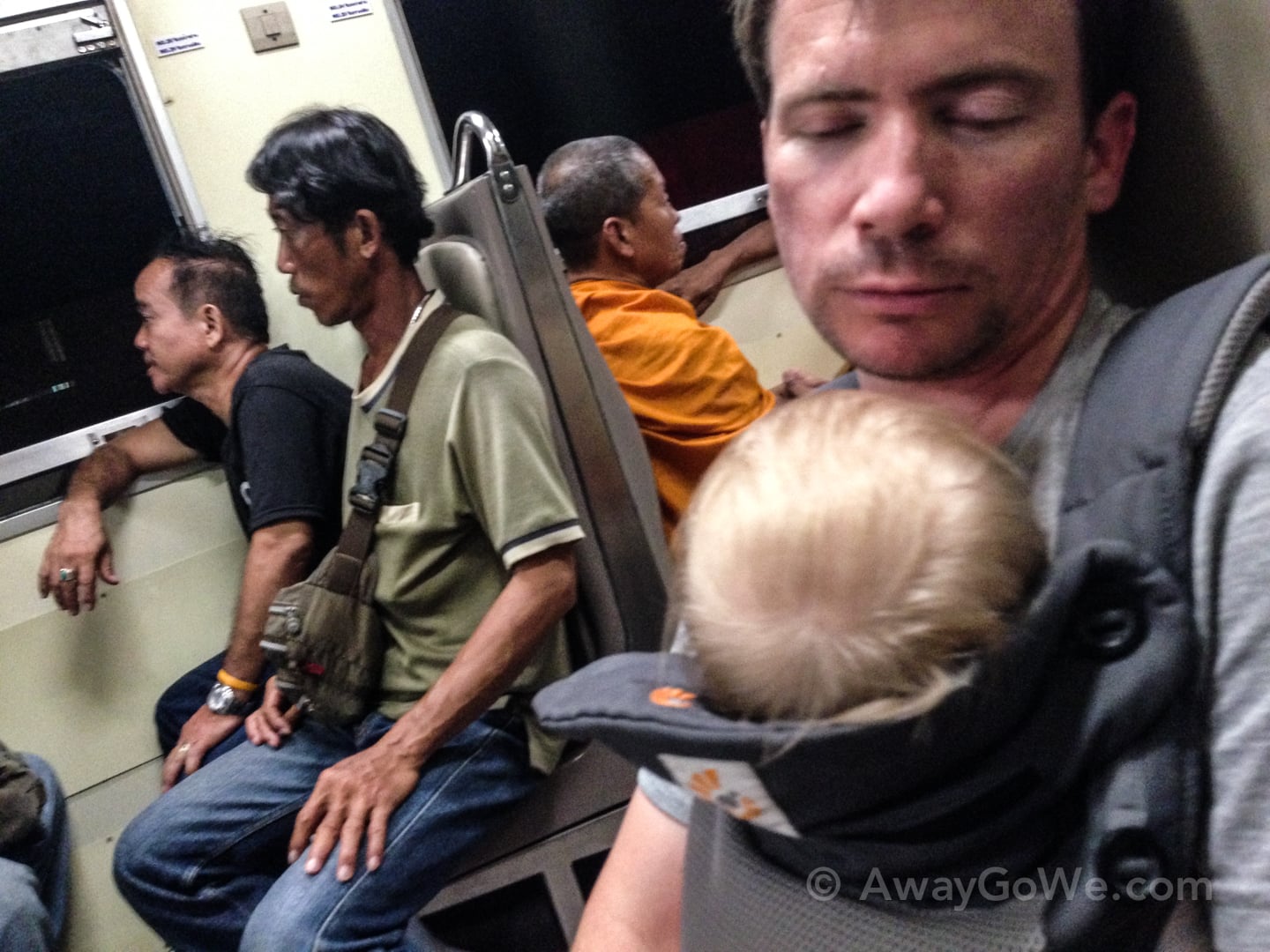
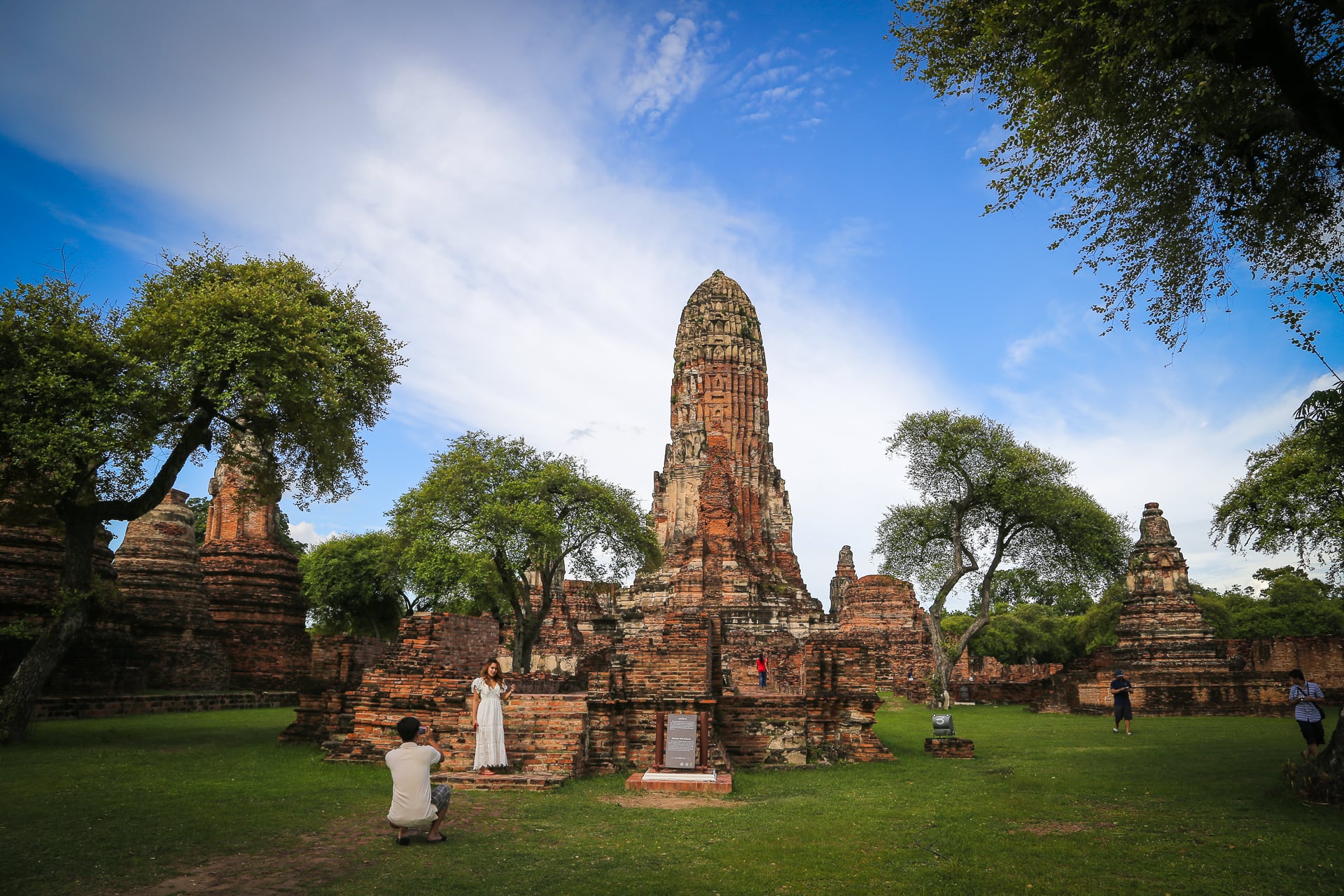
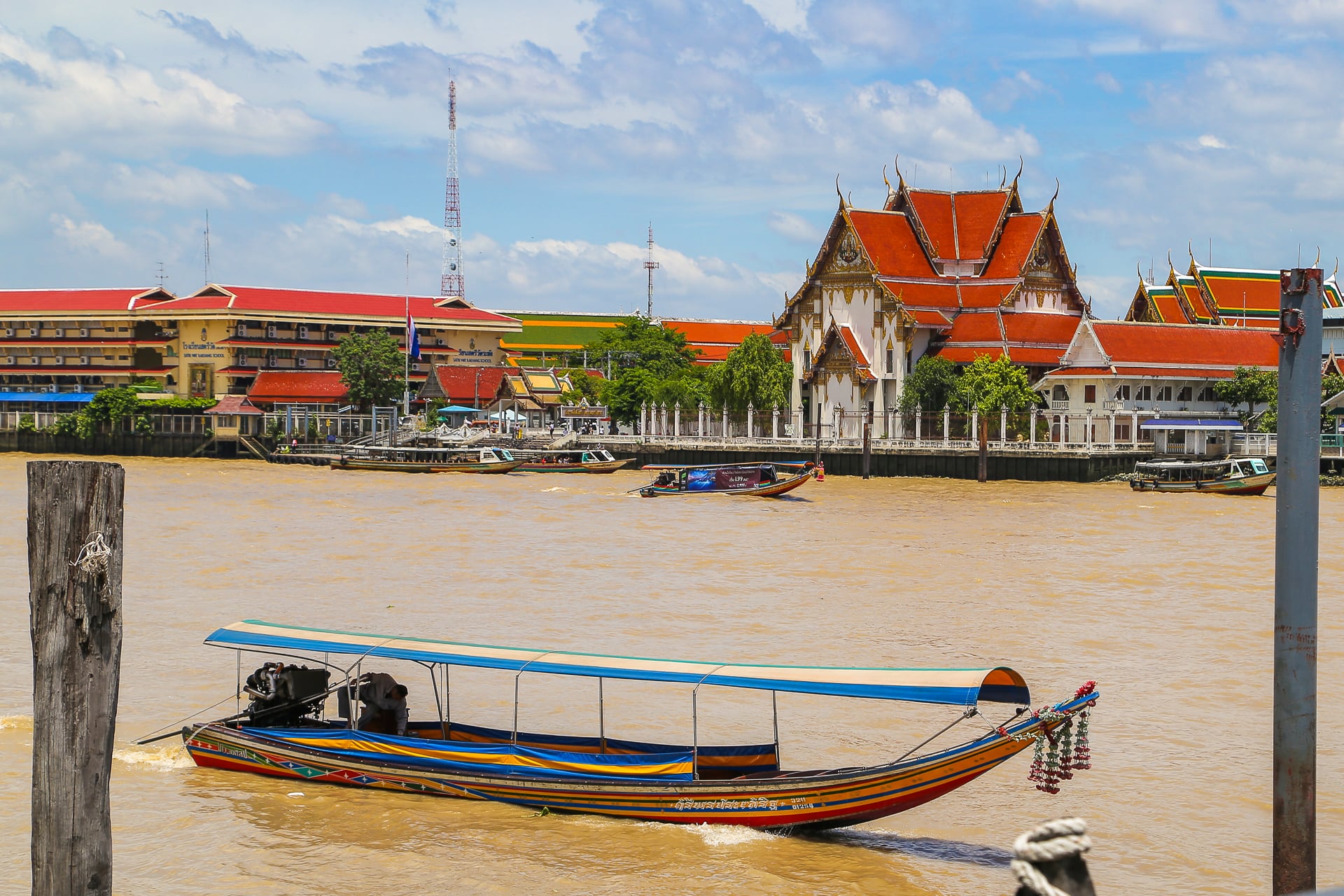
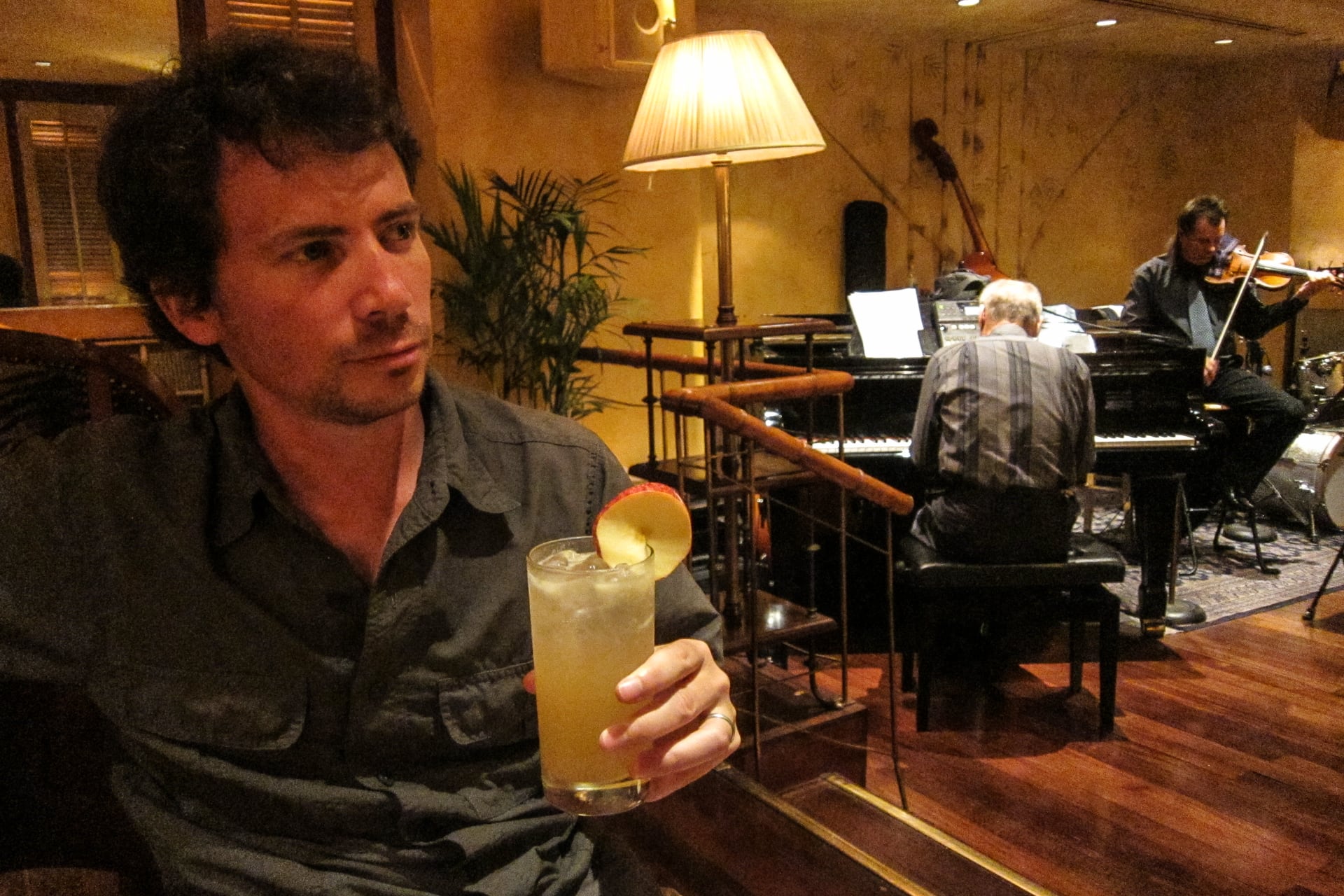
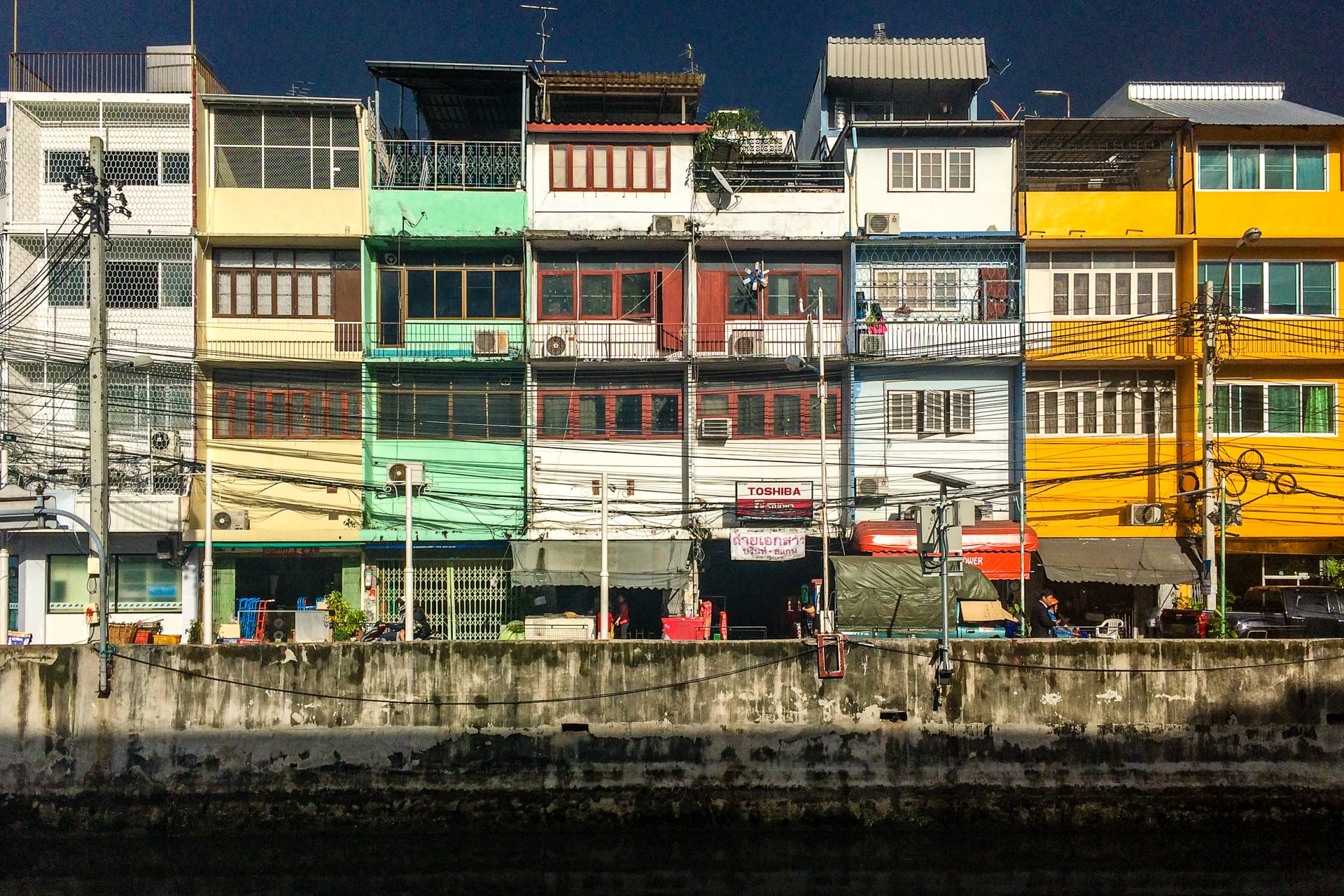
Love Noe’s pants.
Thanks! They are perfect for the sun and humidity in SE Asia…he fits right in with the backpackers 🙂